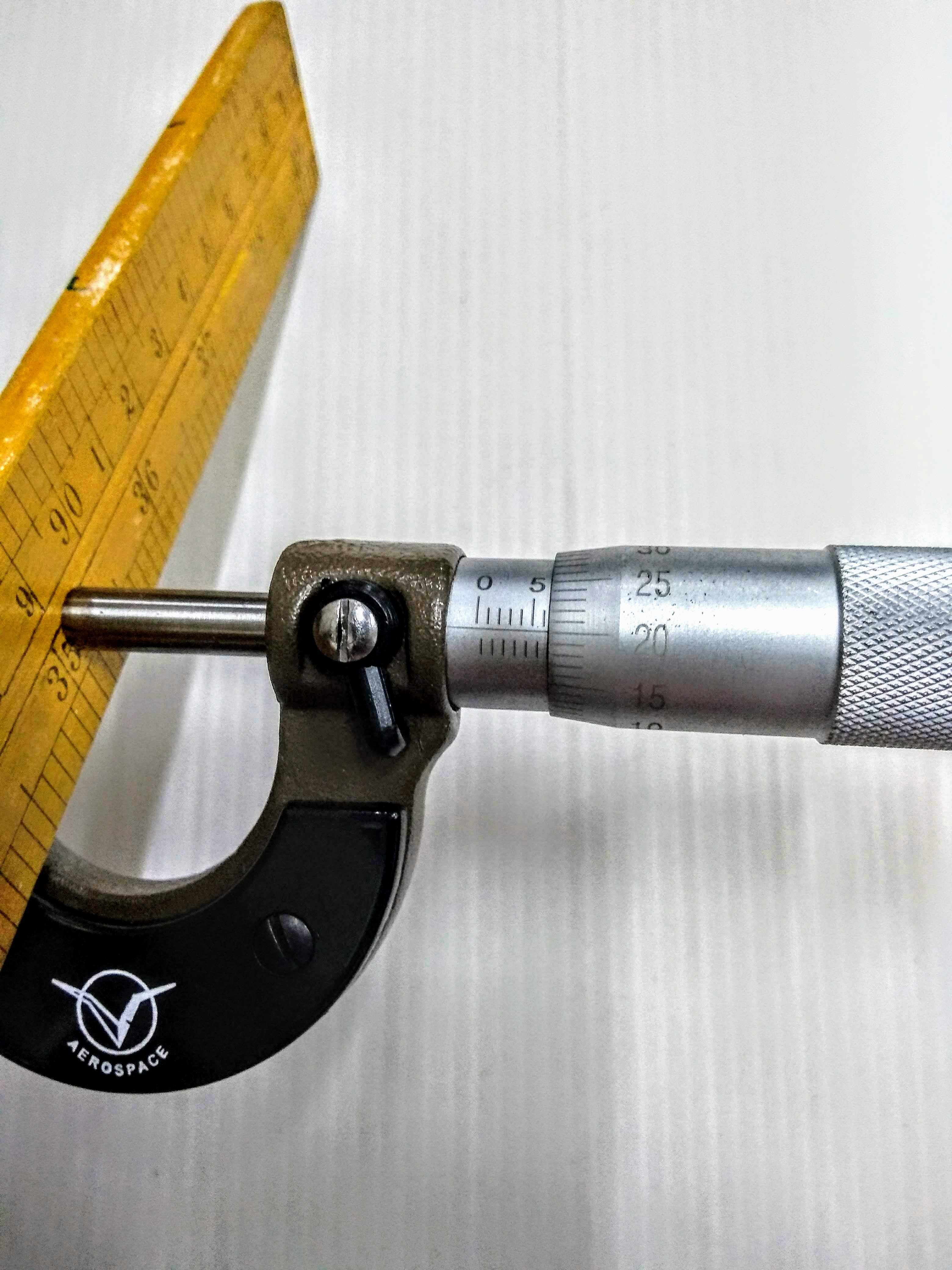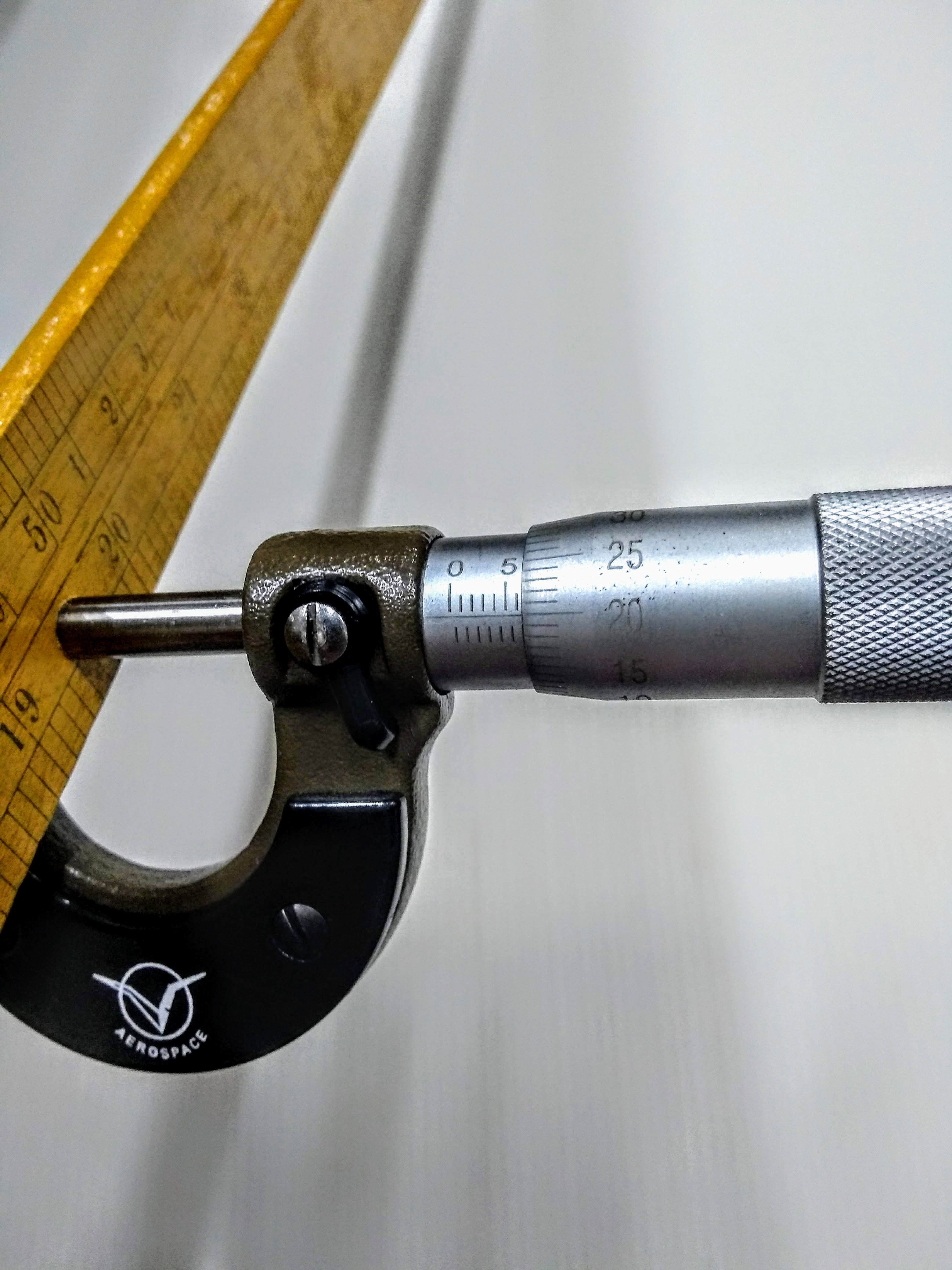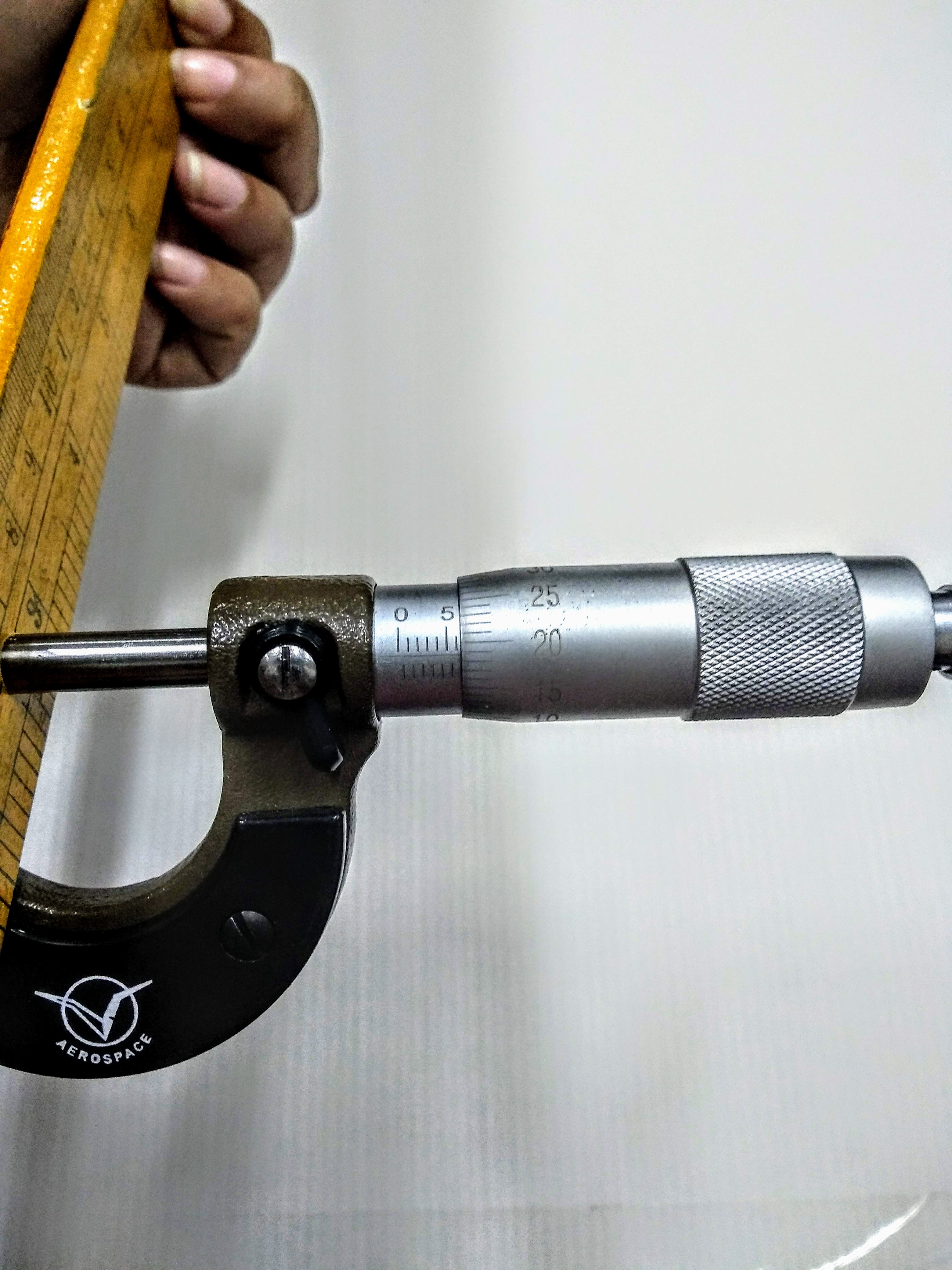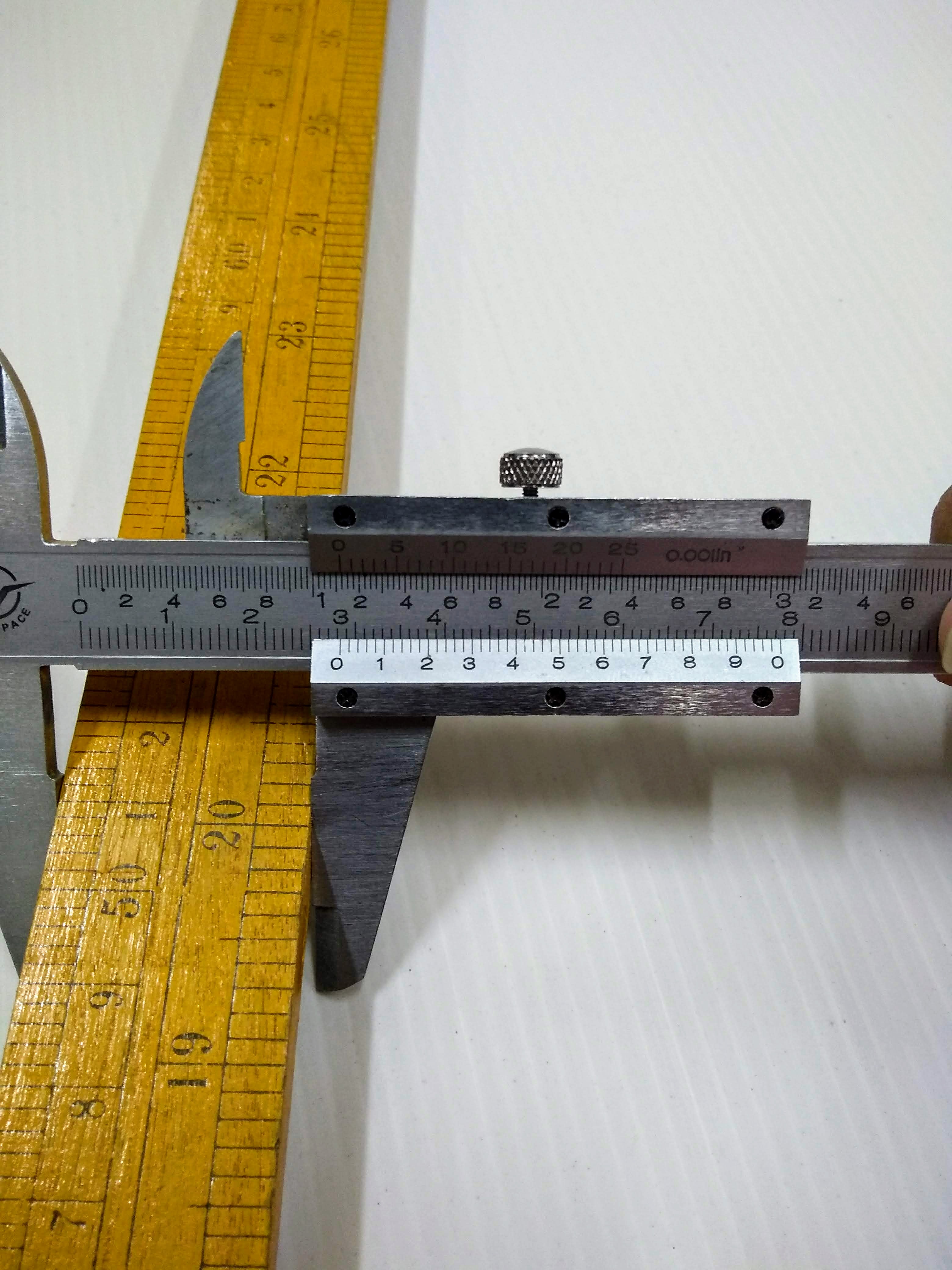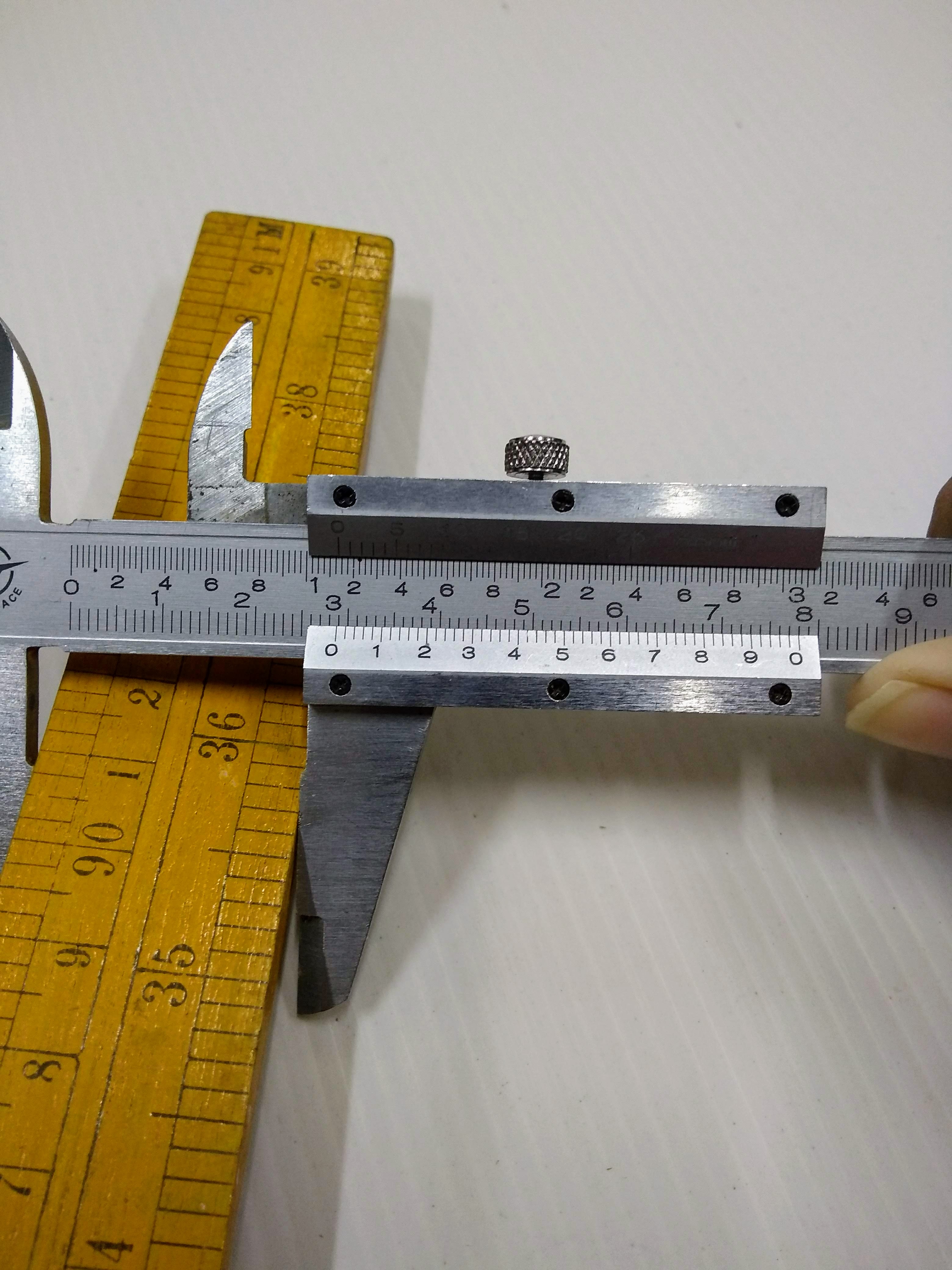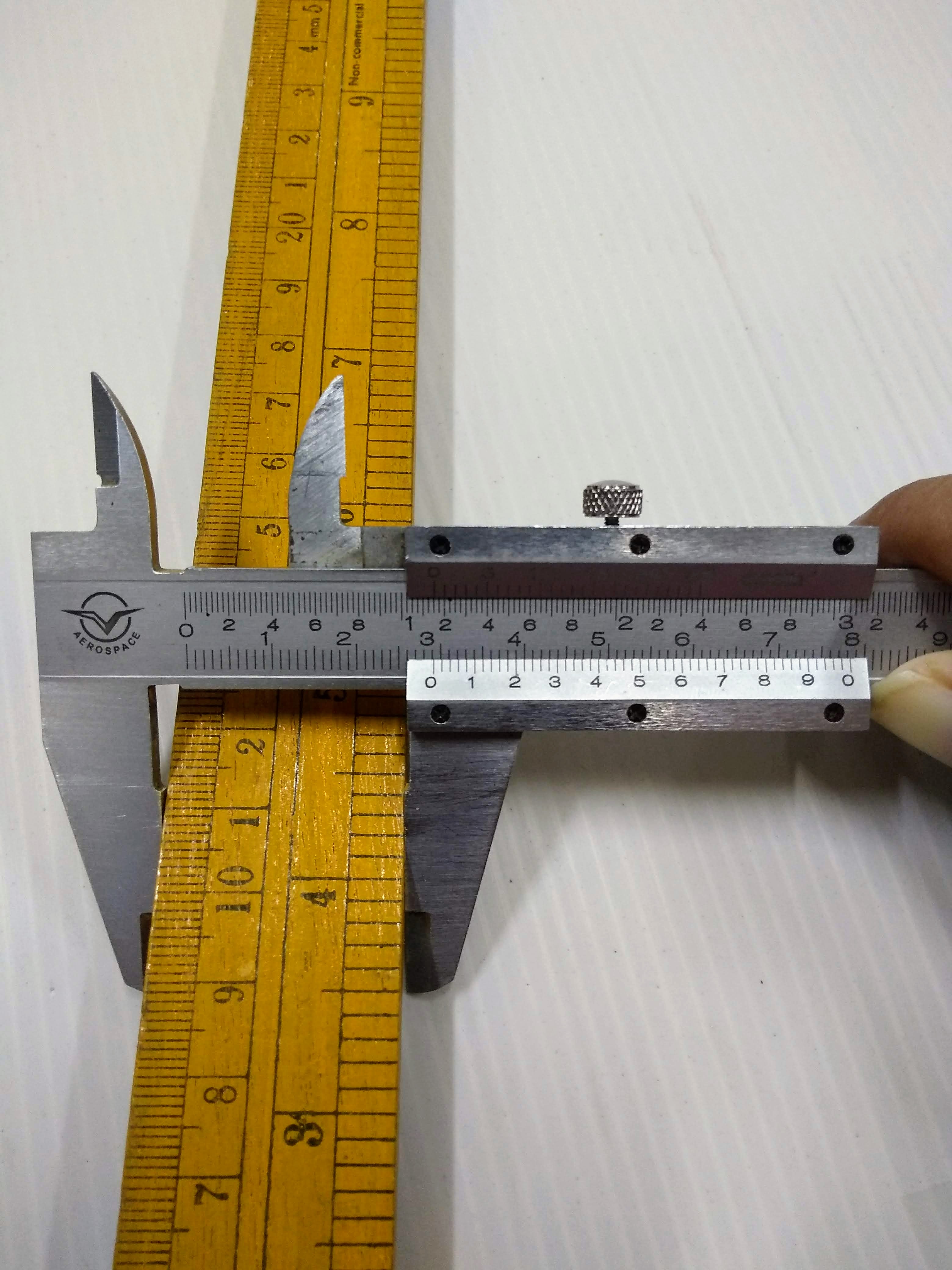‘Y’ by Bending
Objective: To determine Young’s modulus of the material of the given bar by the method of bending.
Apparatus: The given bar, two stands with knife edges, stirrup having a hook and hanger with slotted weights, pin
Theory:
Young’s modulus, also known as the elastic modulus, is a measure of the stiffness of a solid material. It is a mechanical property of linear elastic solid materials. It defines the relationship between stress (force per unit area) and strain (proportional deformation) in a material. A solid material will deform when a load is applied to it. If it returns to its original shape after the load is removed, this is called elastic deformation. In the range where the ratio between load and deformation remains constant, the stress-strain curve is linear.
In this experiment, a solid beam is the object whose elastic constant Young’s modulus is to be determined. If the beam is supported at the two ends and loaded with a mass m at the midpoint, we have a reaction mg/2 at each knife-edge. If l is the total length of the bar, the depression produced at the center will be exactly the same as the depression at the end of a similar bar of length l/2 and loaded at the end with a mass m/2, i.e. if we imagine the bar clamped at the midpoint and a force mg/2 applied at one end. The movement of the end is precisely the same as the depression in the middle in the actual case taken.

Such a depression e be measured and Young’s modulus of the material can be obtained by using following equation:
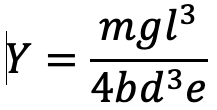
Procedure:
- Keep the given bar horizontal on the two knife edges A and B. The bar should be kept symmetrically in such way that its portions projecting beyond the knife edges are equal, producing equal reactions at both the ends A and B. Adjust the distance (l) between the knife edges around 90 cm and measure l. (Click on the image to enlarge)
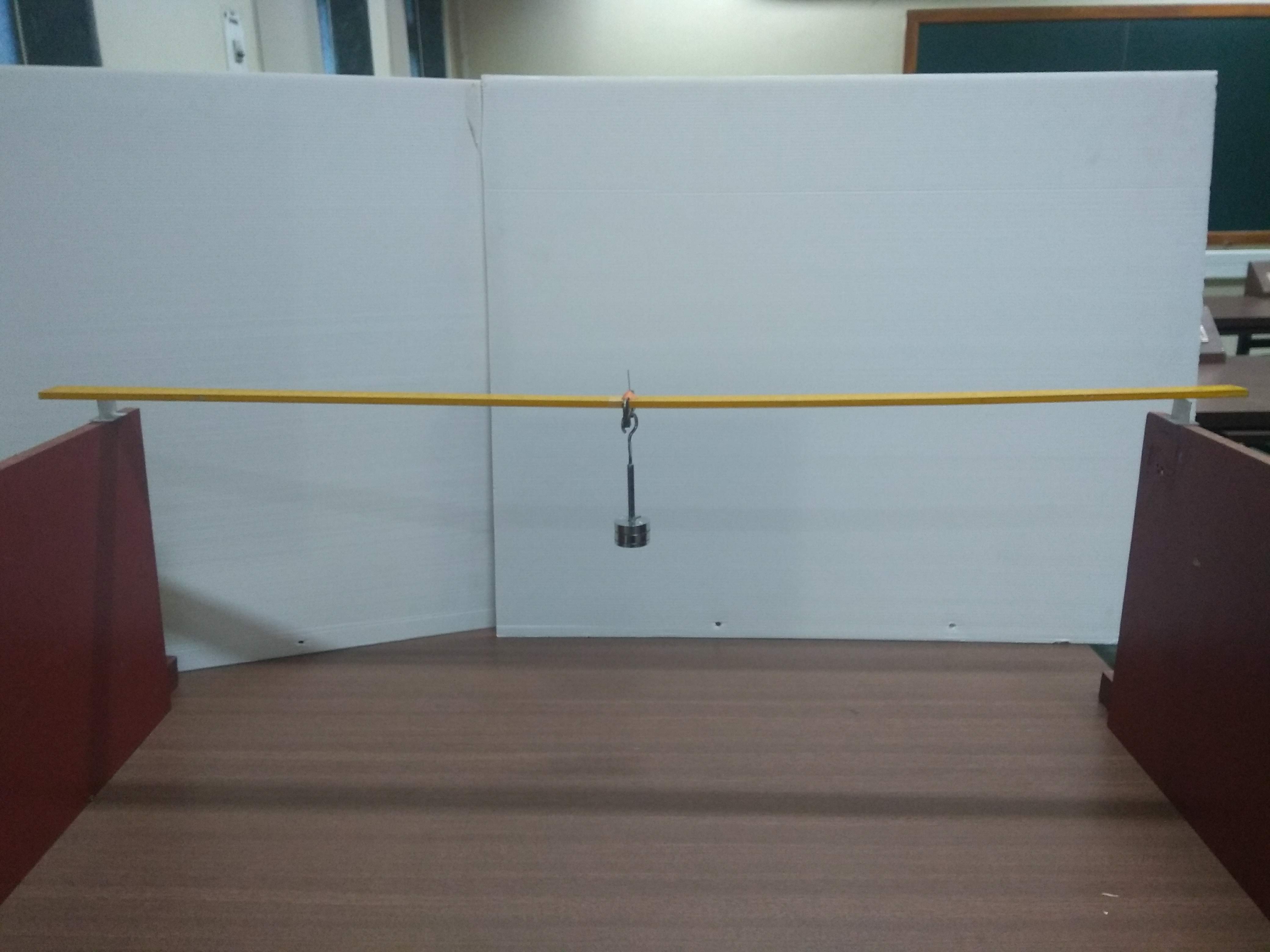
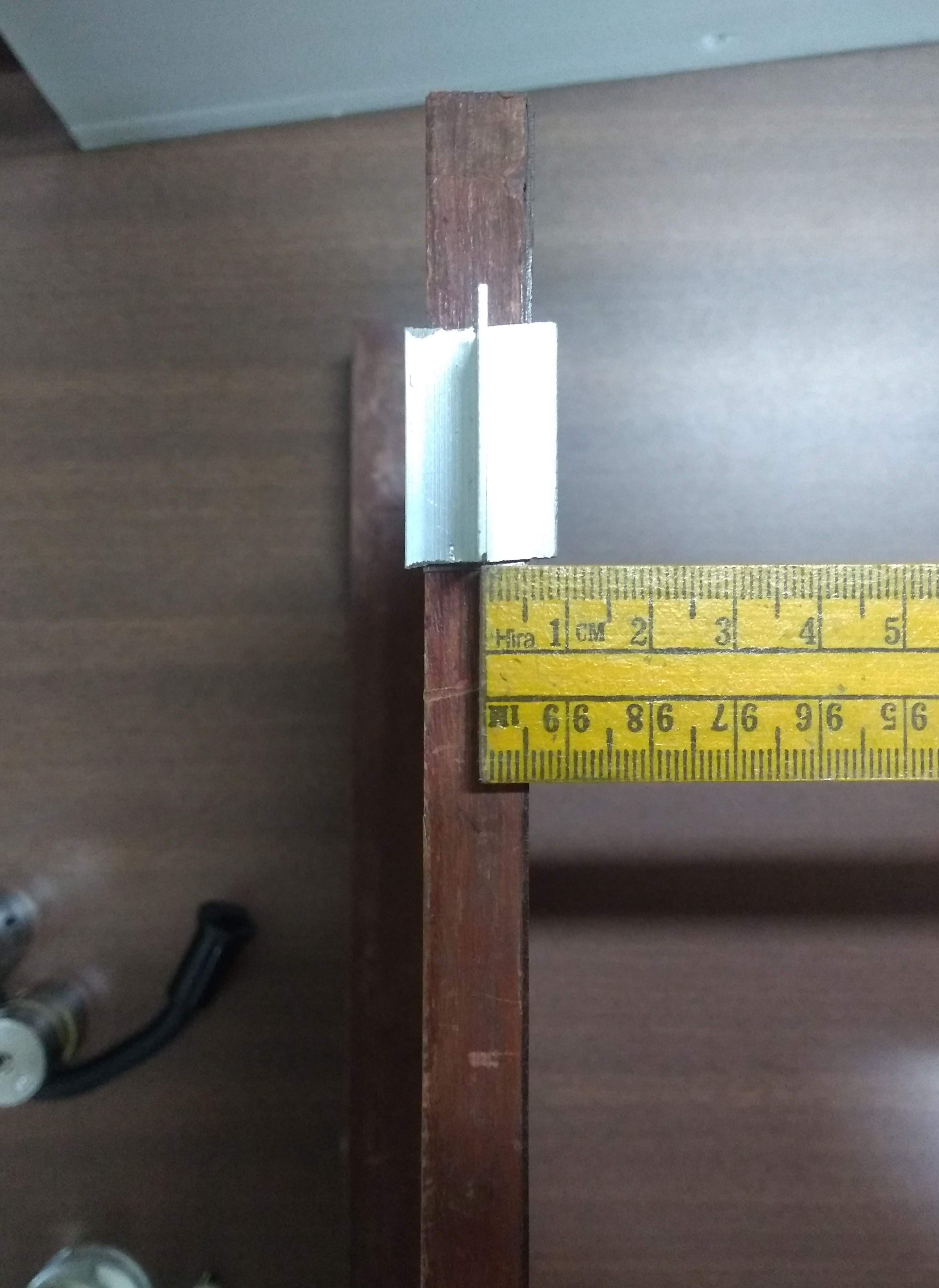
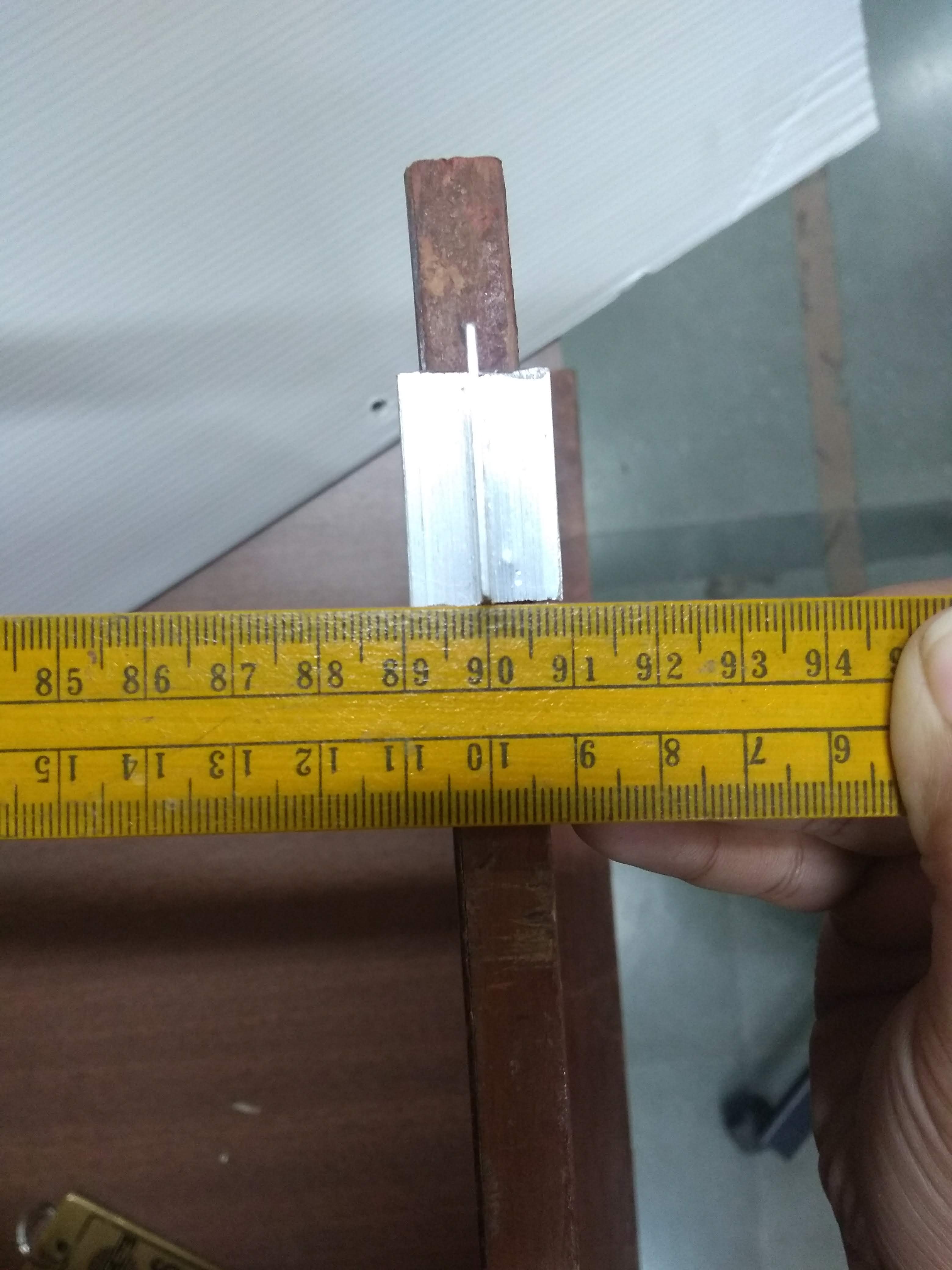
- Put the stirrup at the midpoint of the bar and attach to it a marker pin T with little plasticin.
- Now focus the travelling microscope in such a way that the intersection of the cross wire is at the top of the marker pin P without parallax.
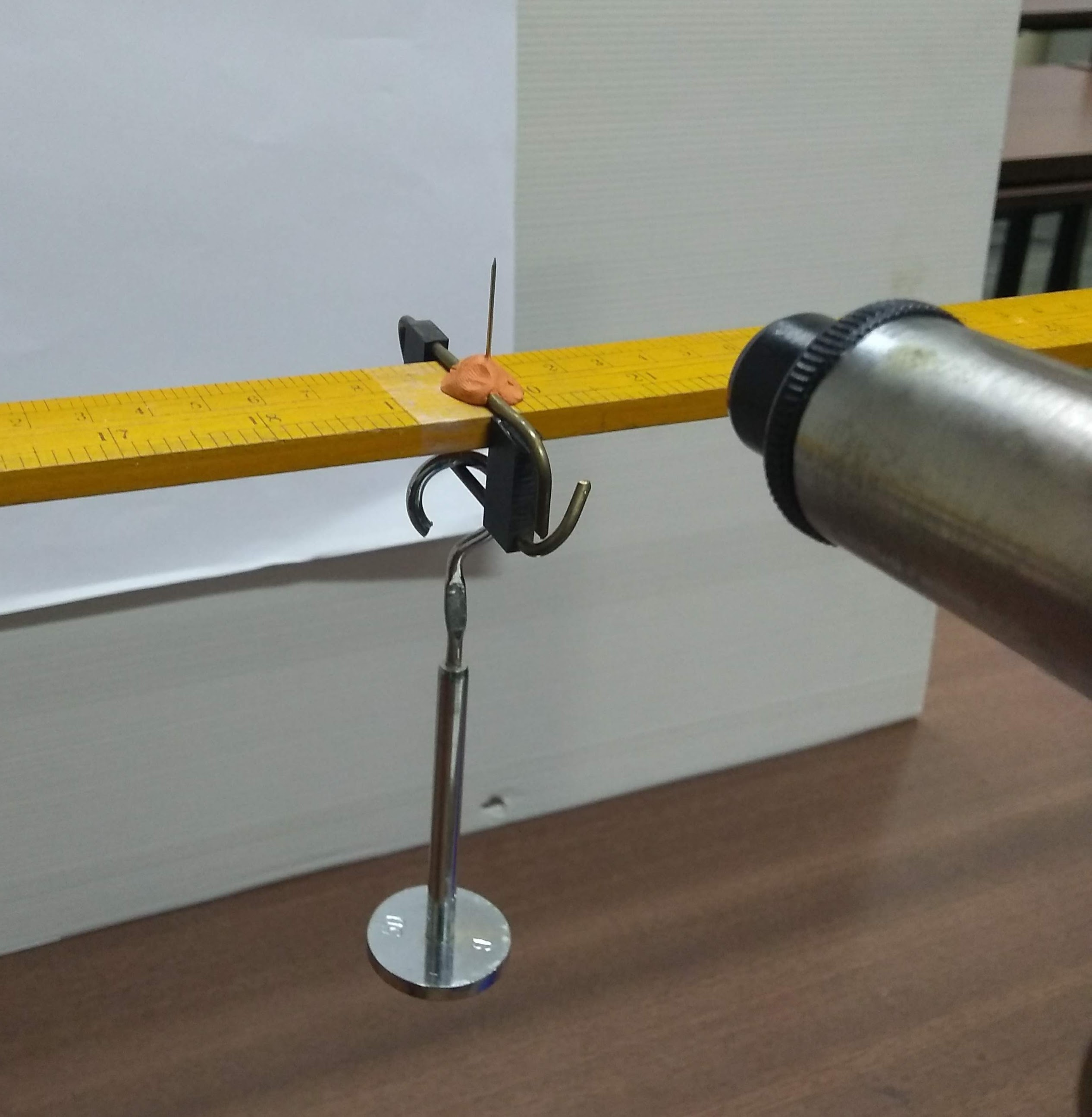
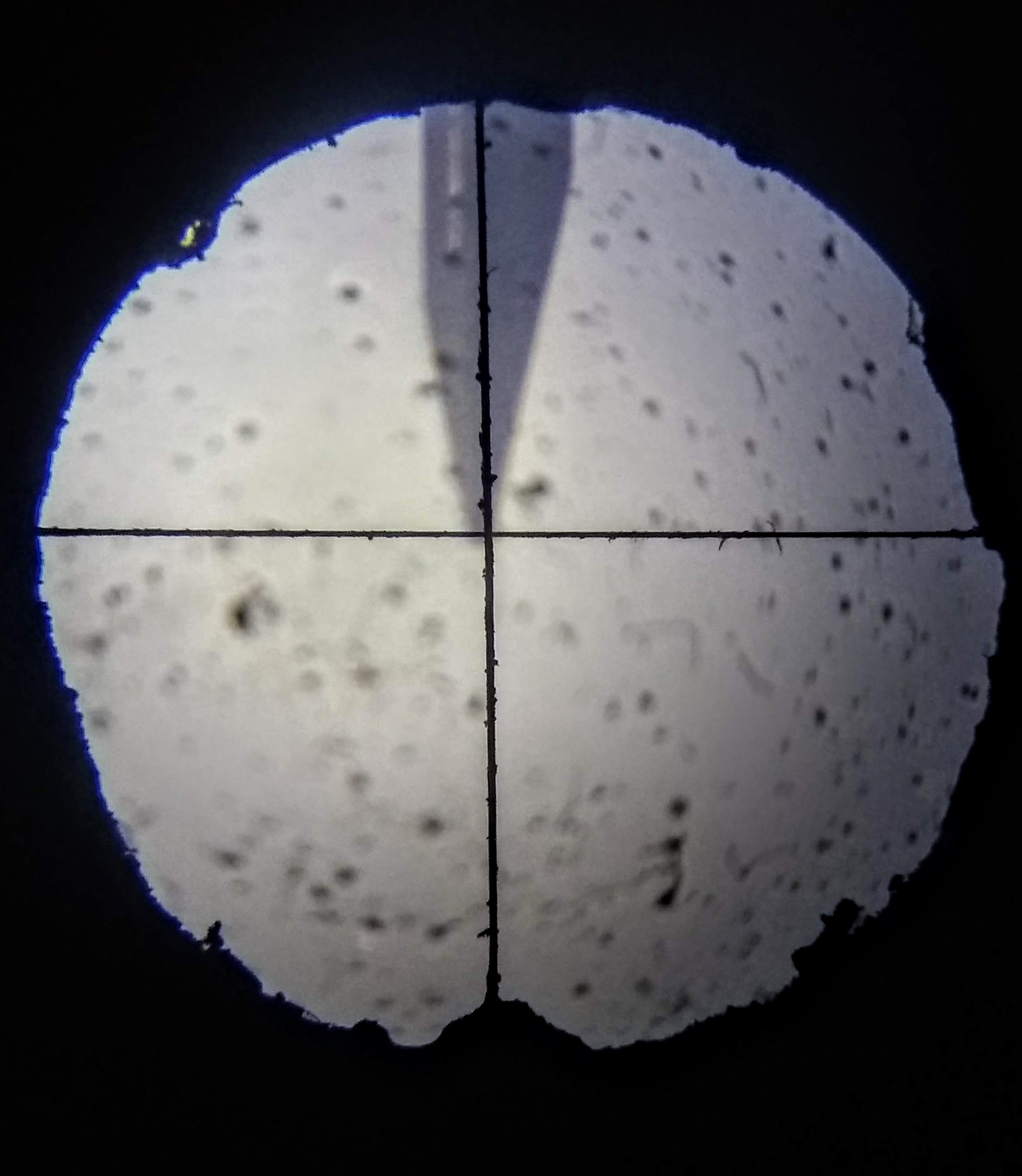
- Attach the hanger with some weight on the stirrup carefully and slowly wait for about 2 minutes, so that the bar will bend down, but in the microscope view, tip of the pin will move up.
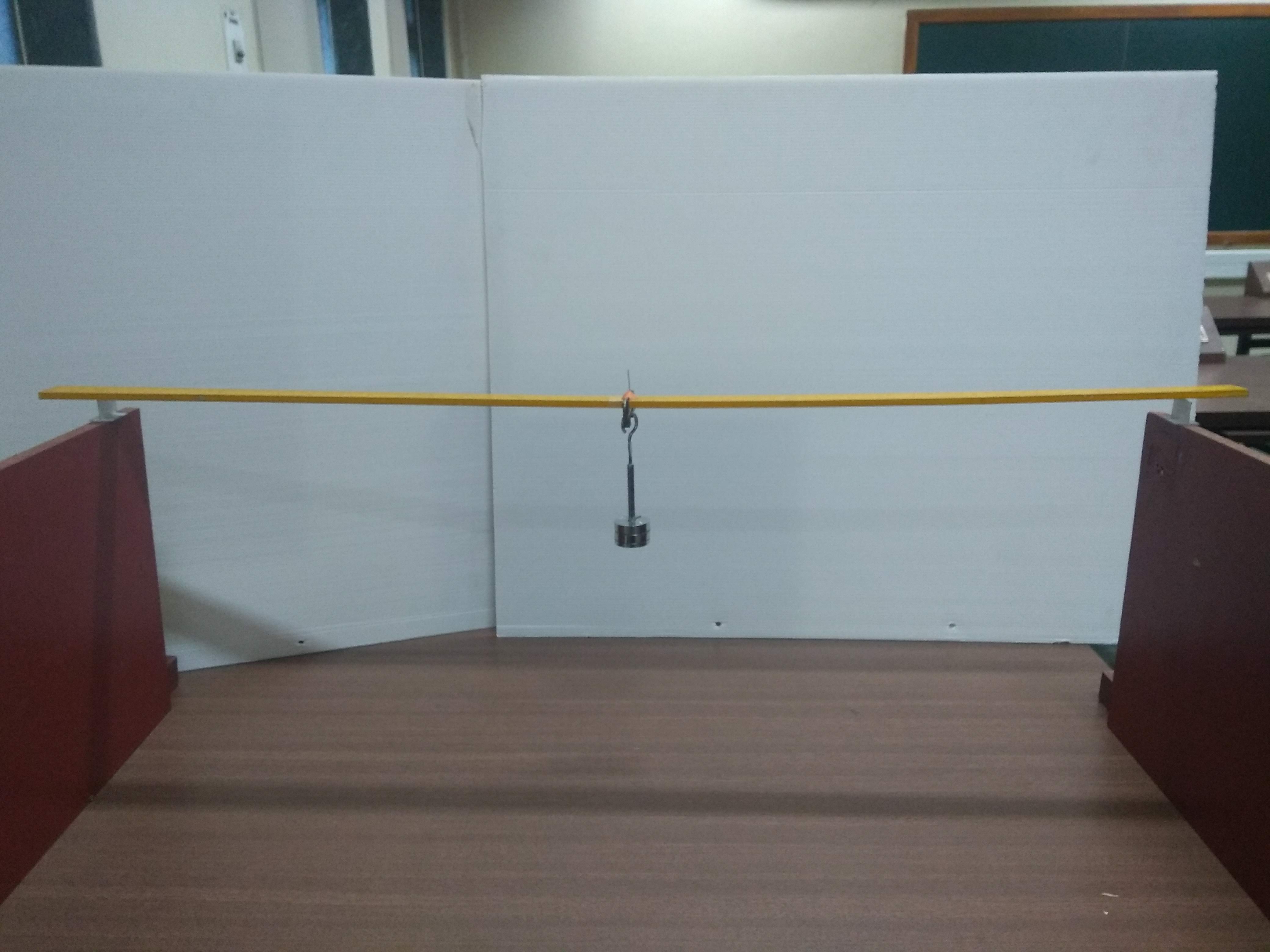
- Focus the tip of the pin on the cross wire and note down the reading on the traveling microscope when no mass is added to the hanger. Add 50 g mass each time and focus the tip of pin for each mass loaded to the hanger. Take at least 6 readings. (Images given below shows the microscope reading for every loading of mass. Click on the image to enlarge)
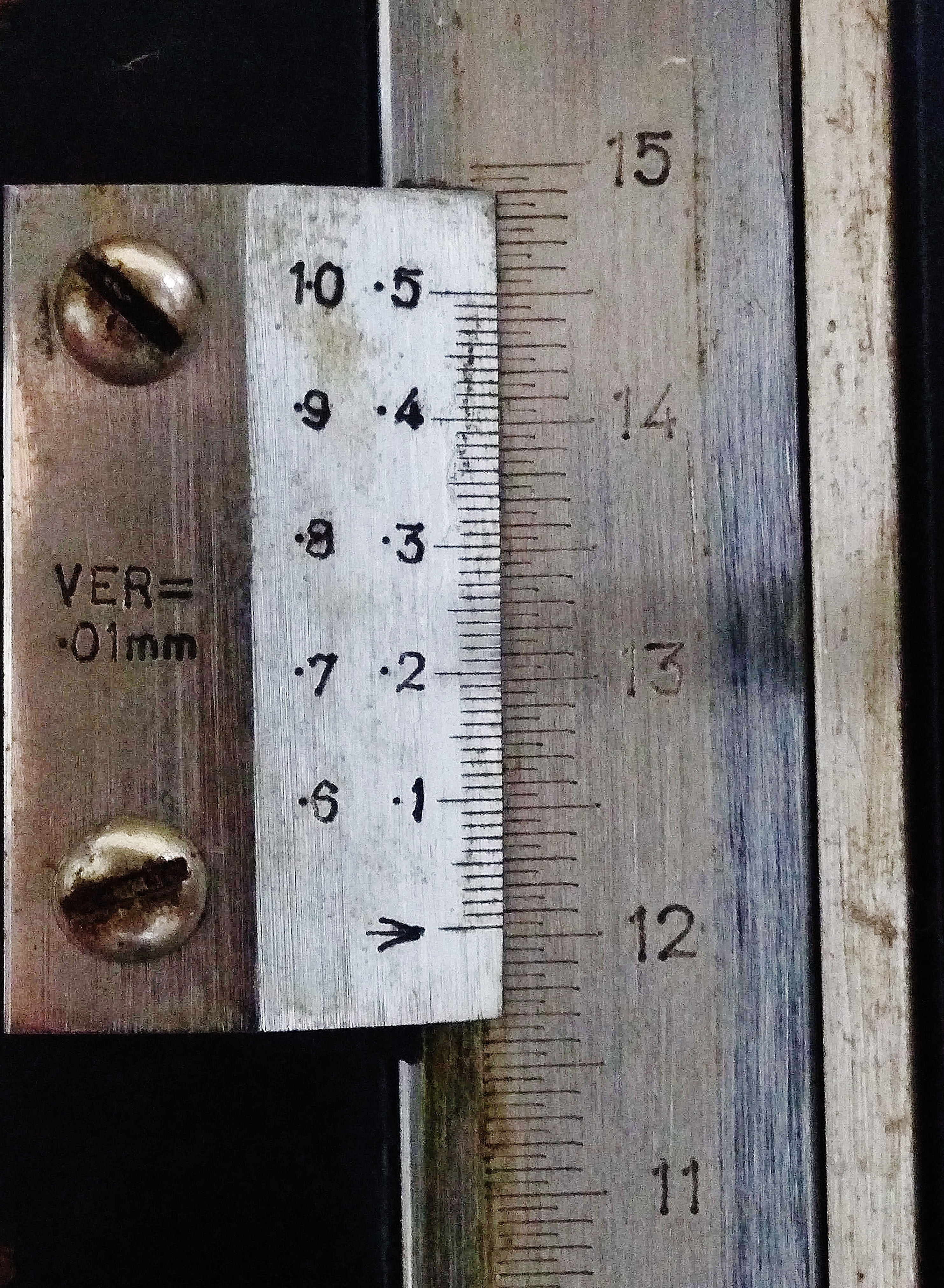
No mass added to the hanger 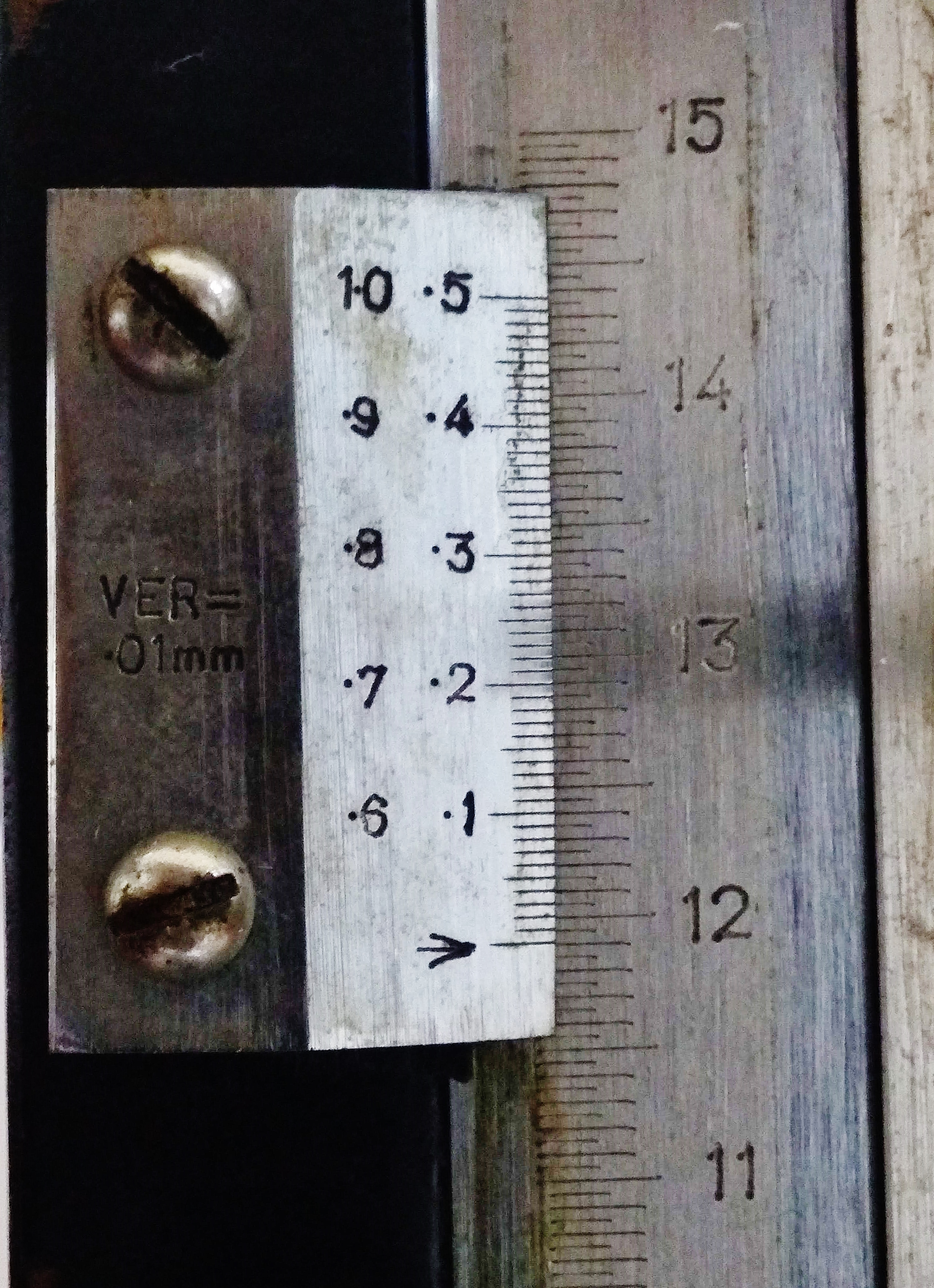
50 g mass loaded 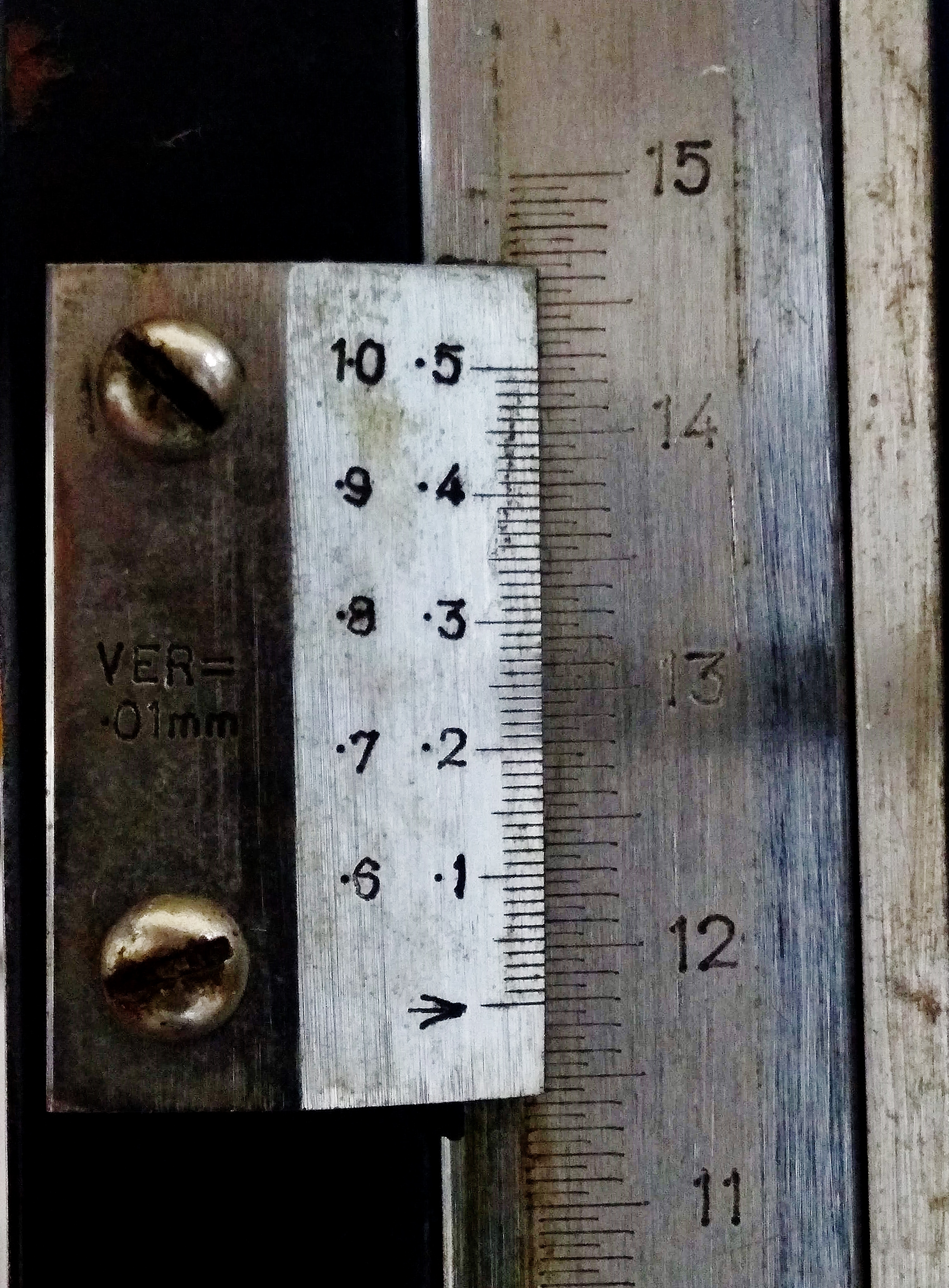
100 g mass loaded 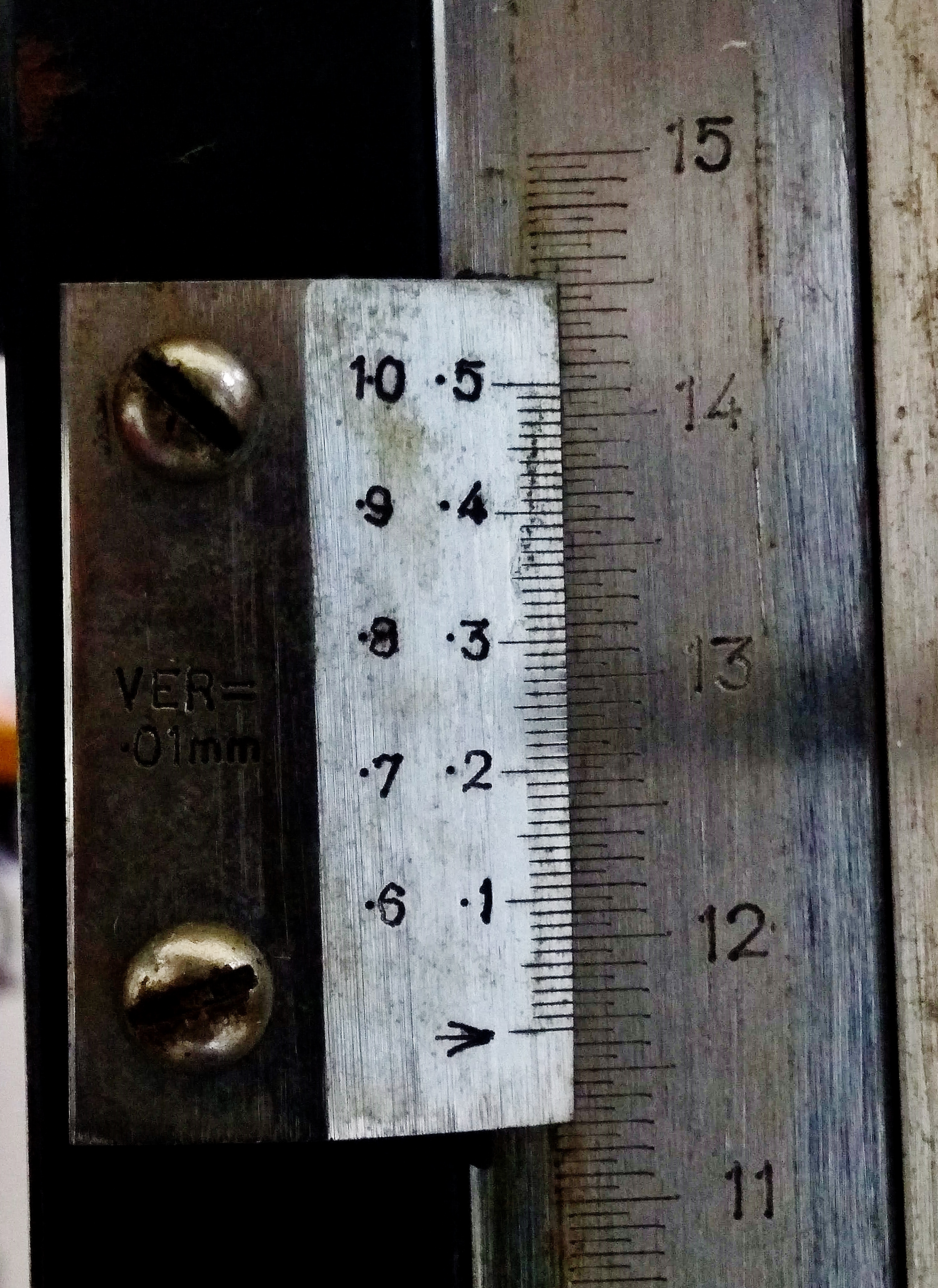
150 g mass added 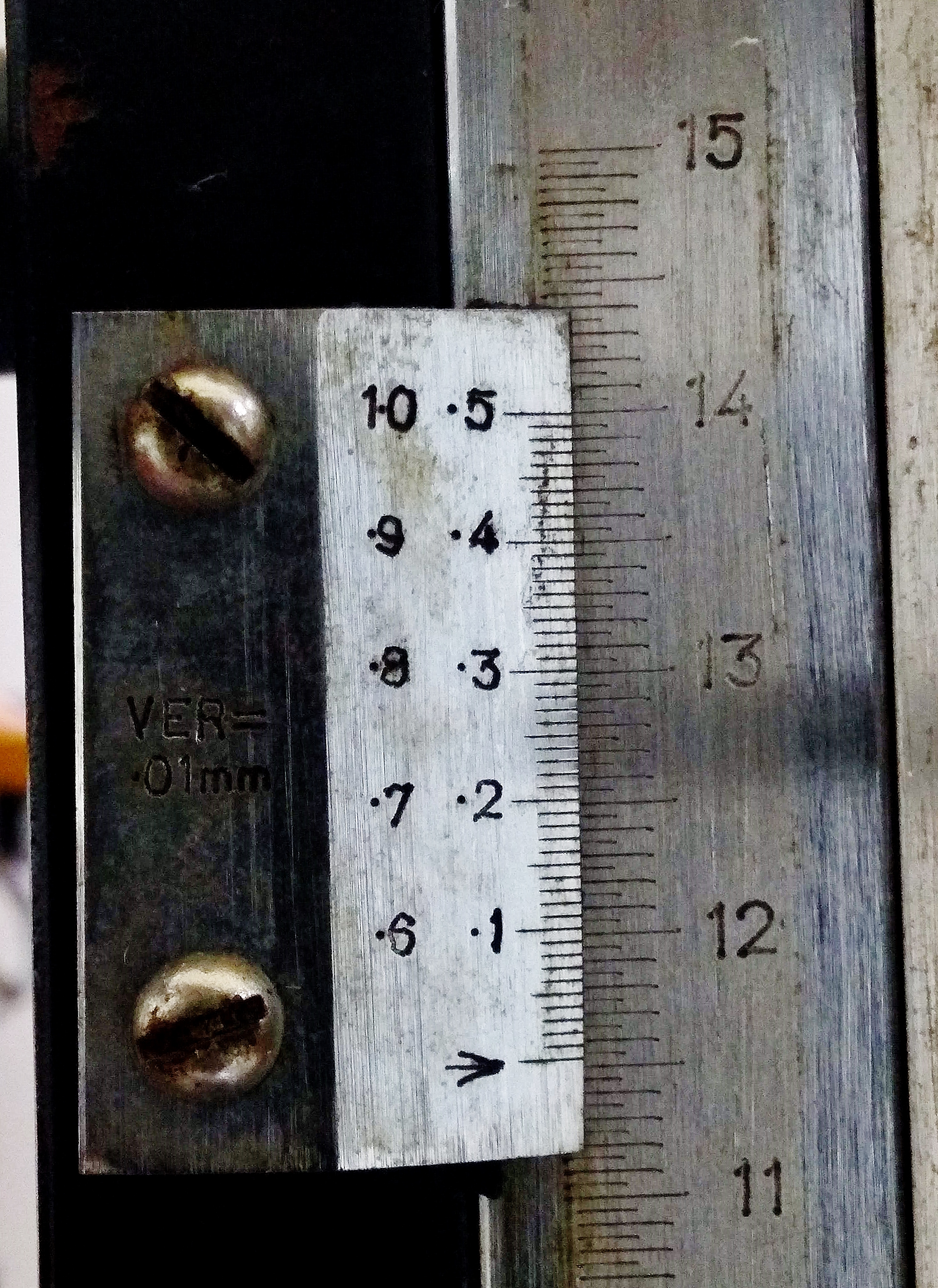
200 g mass loaded 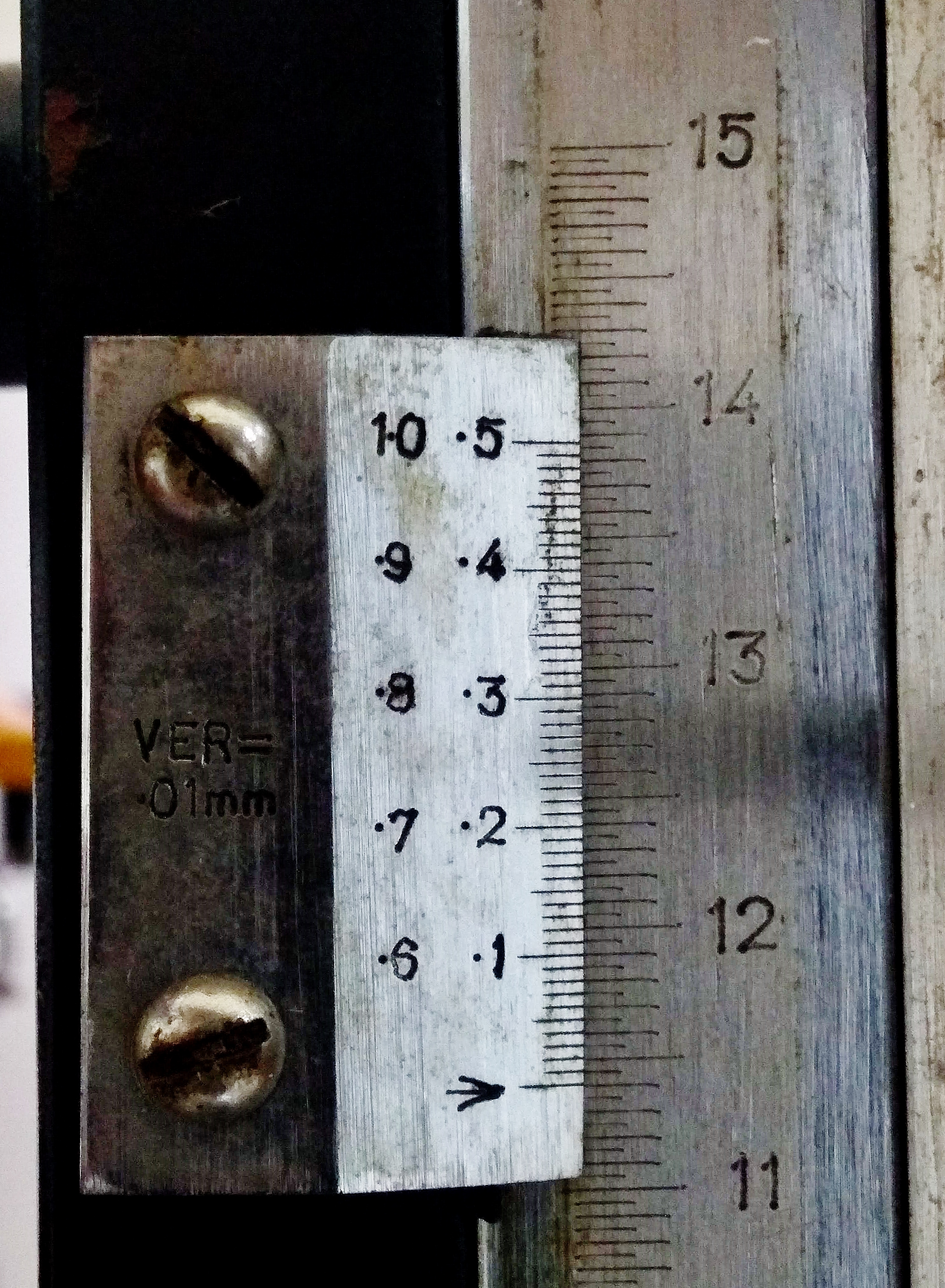
250 g mass loaded 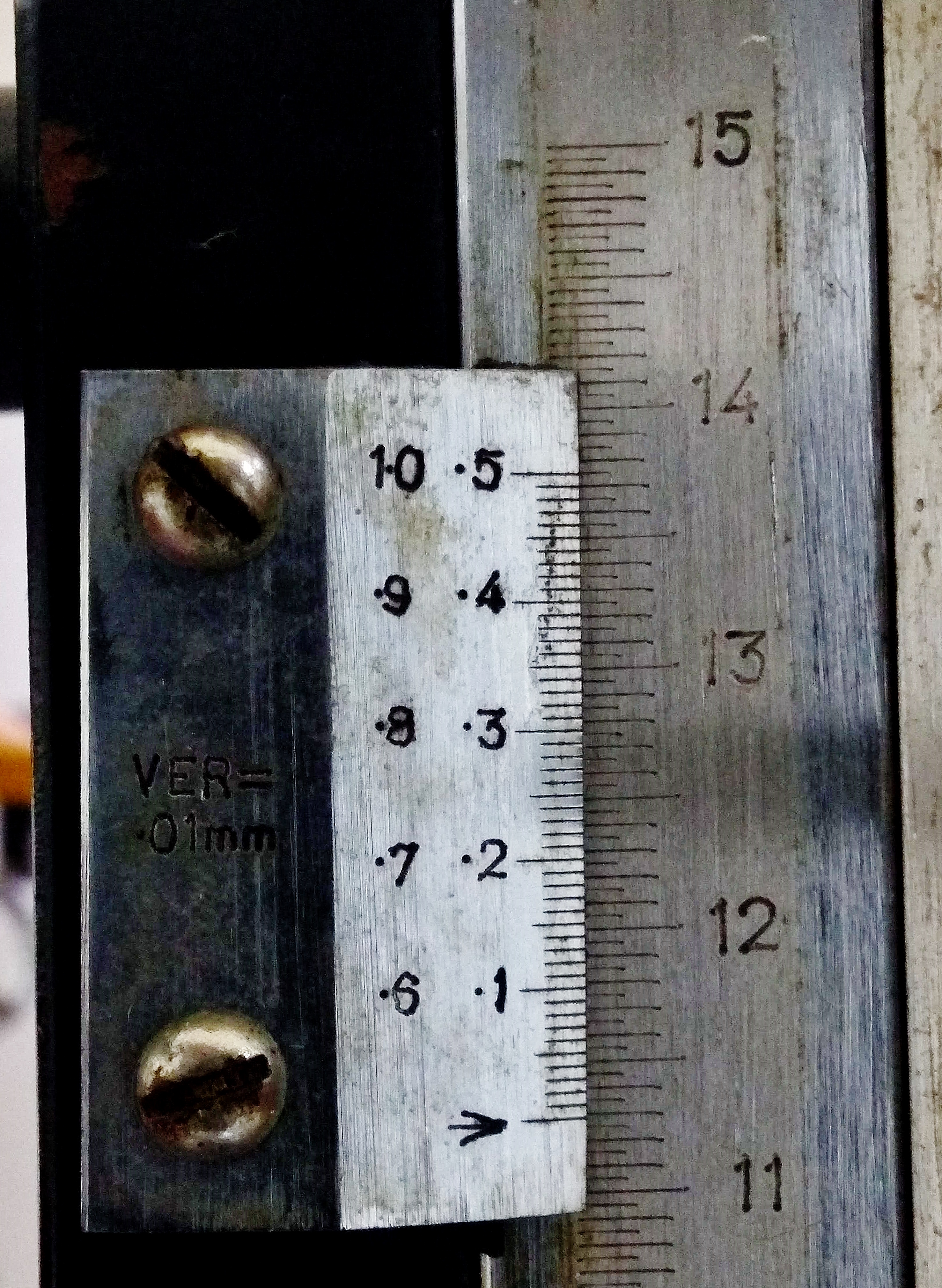
300 g mass loaded 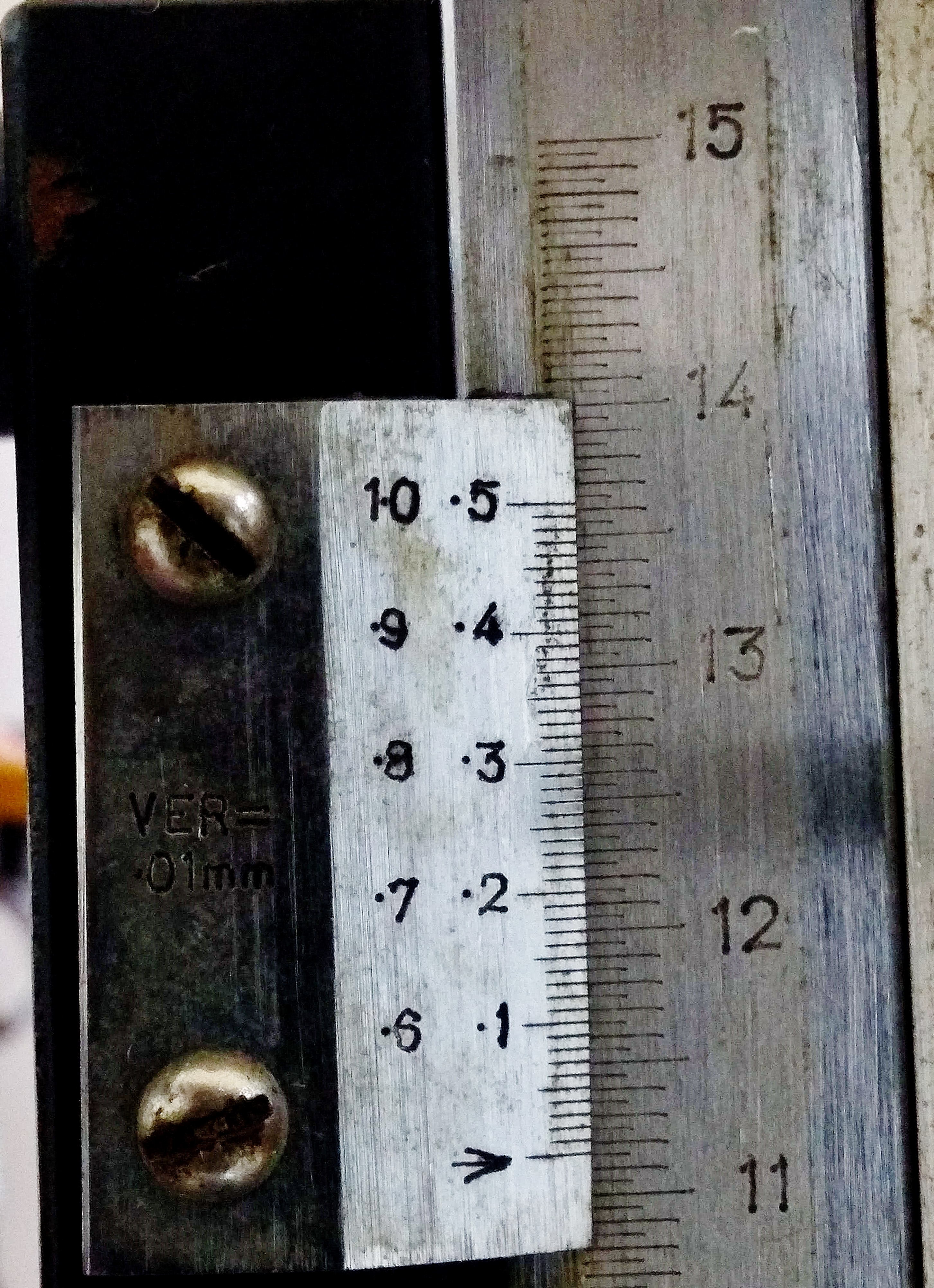
350 g mass loaded
- Unload the weight by 50 g each time and repeat above step. (Click on the image to enlarge)
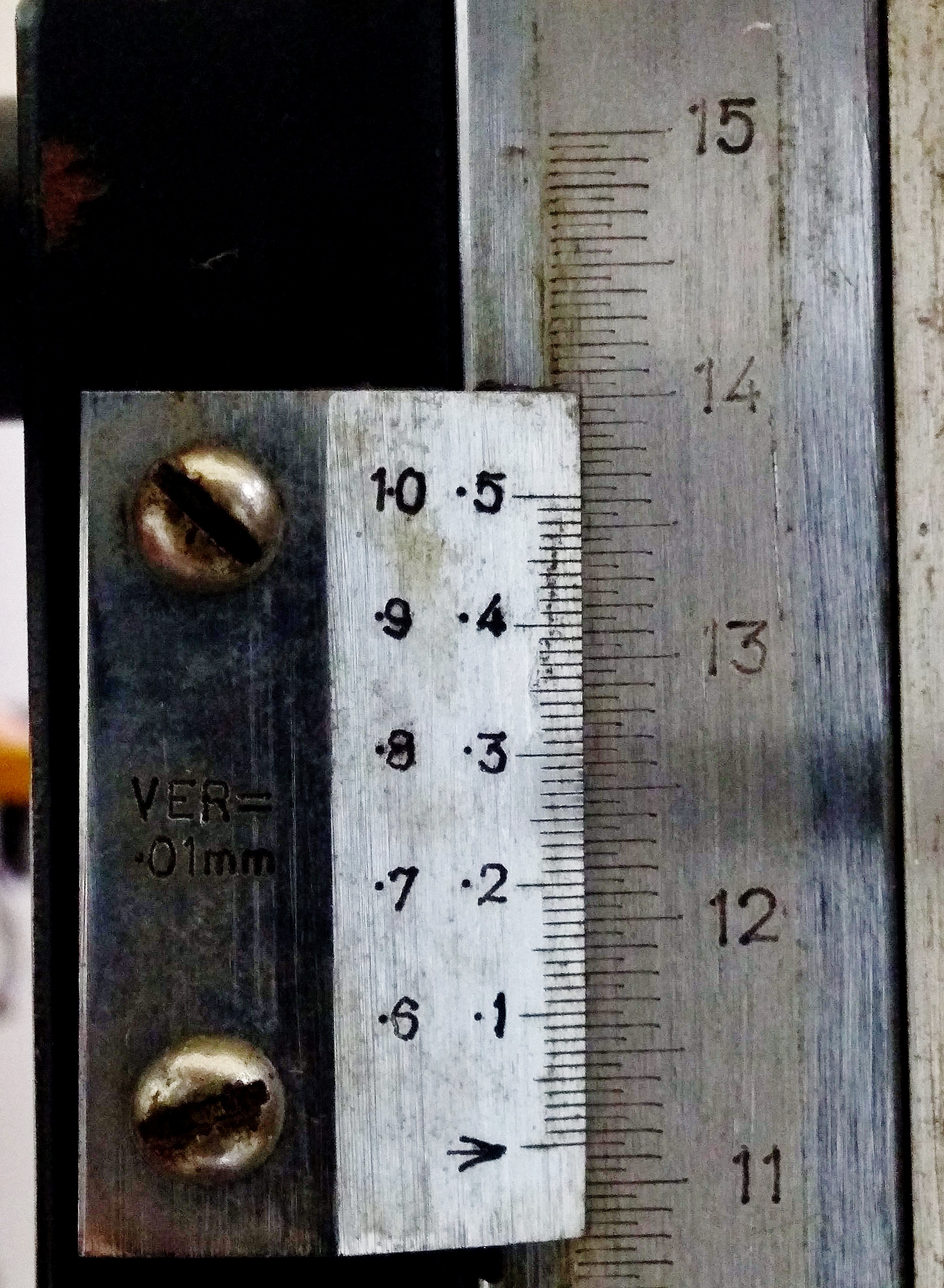
350 g mass on the hanger 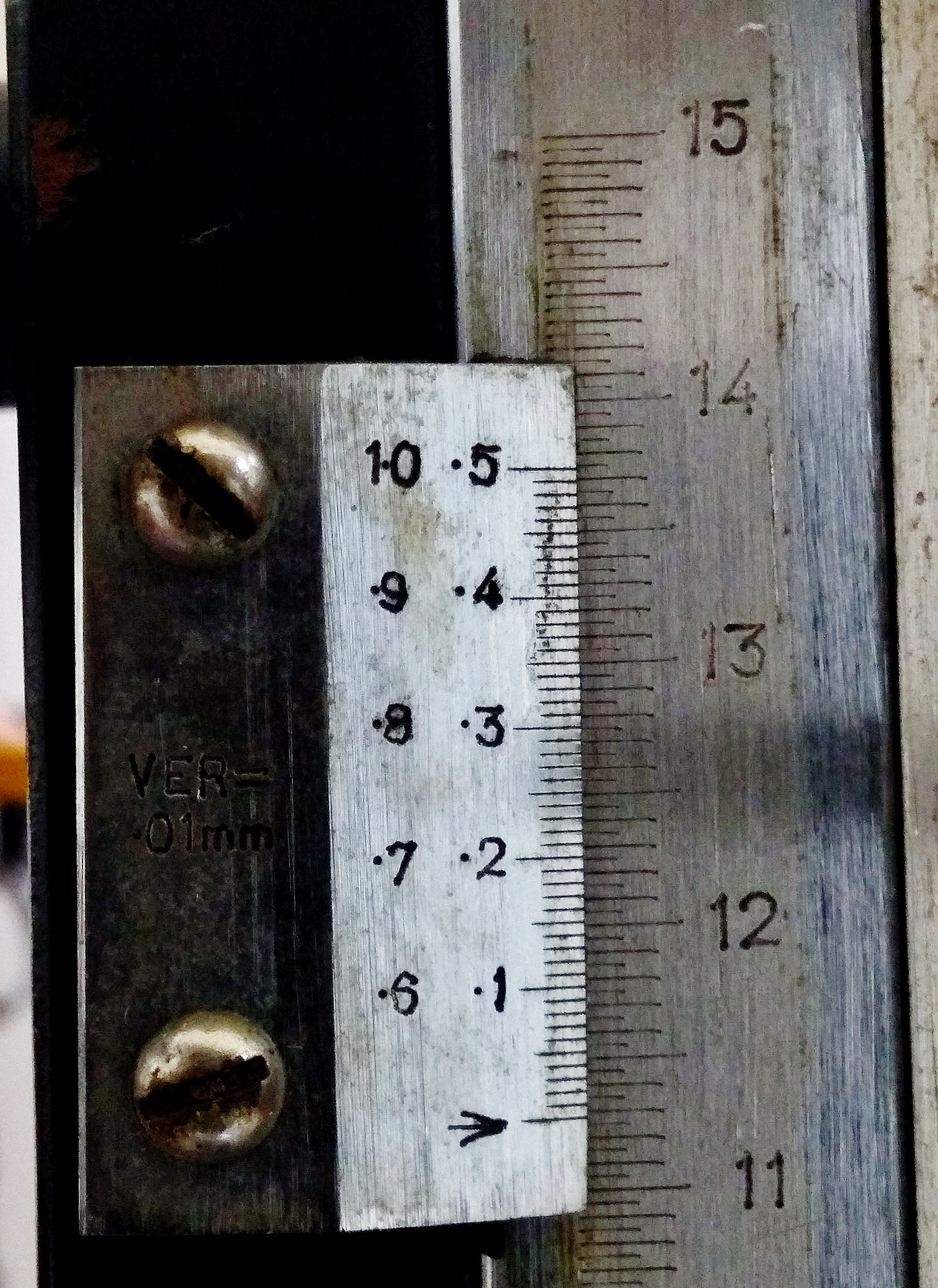
300 g mass on the hanger 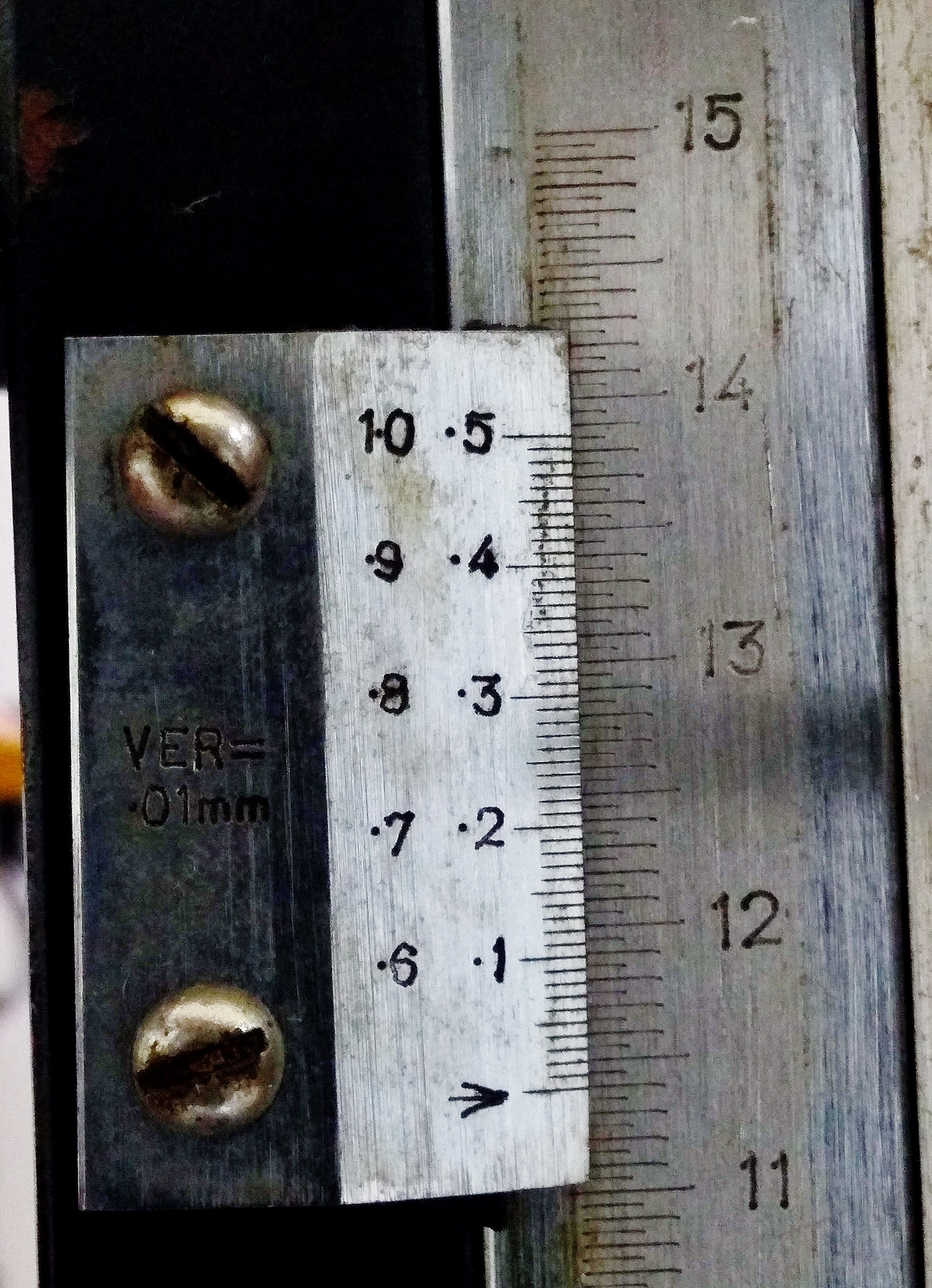
250 g mass on the hanger 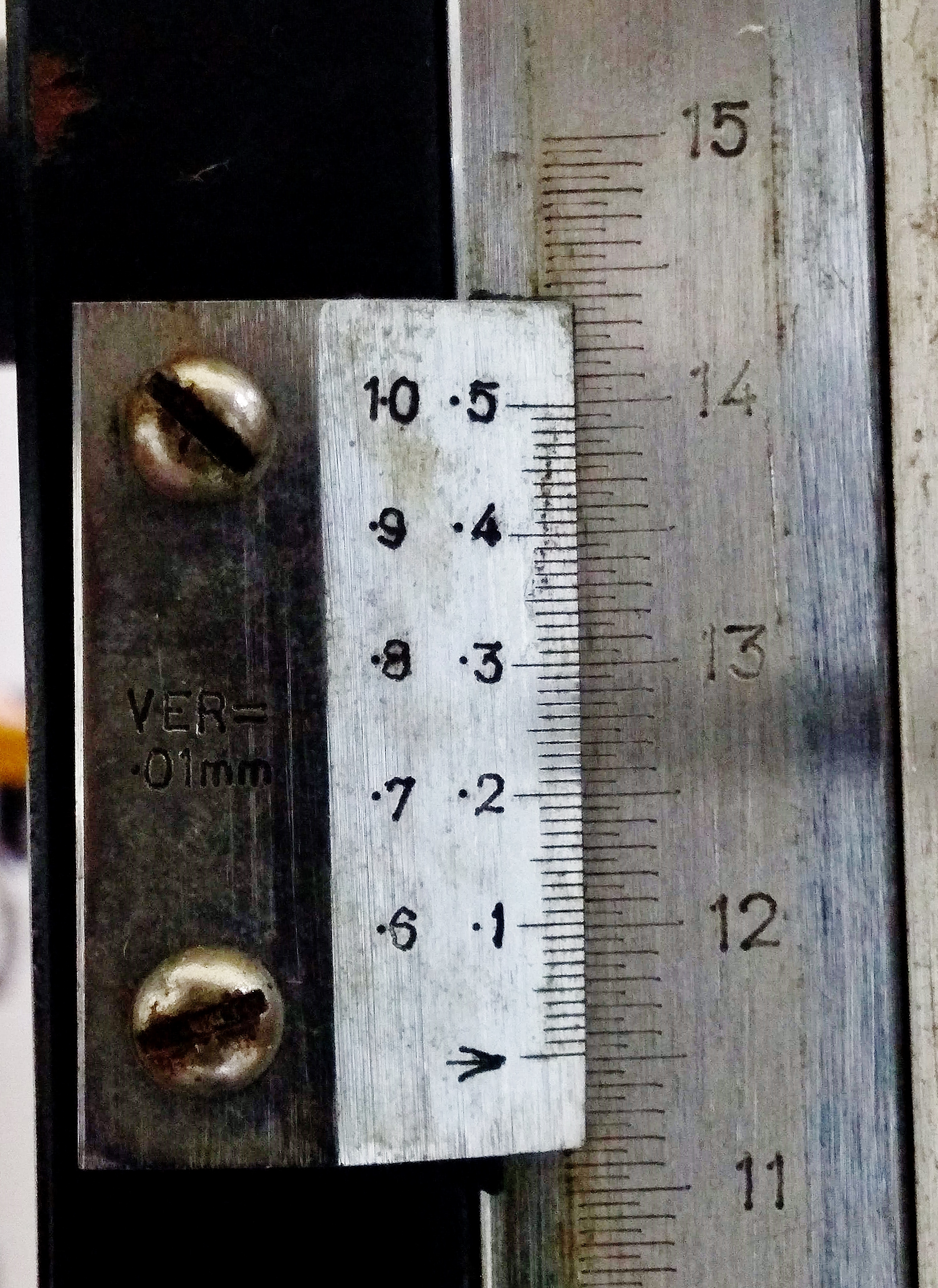
200 g mass on the hanger 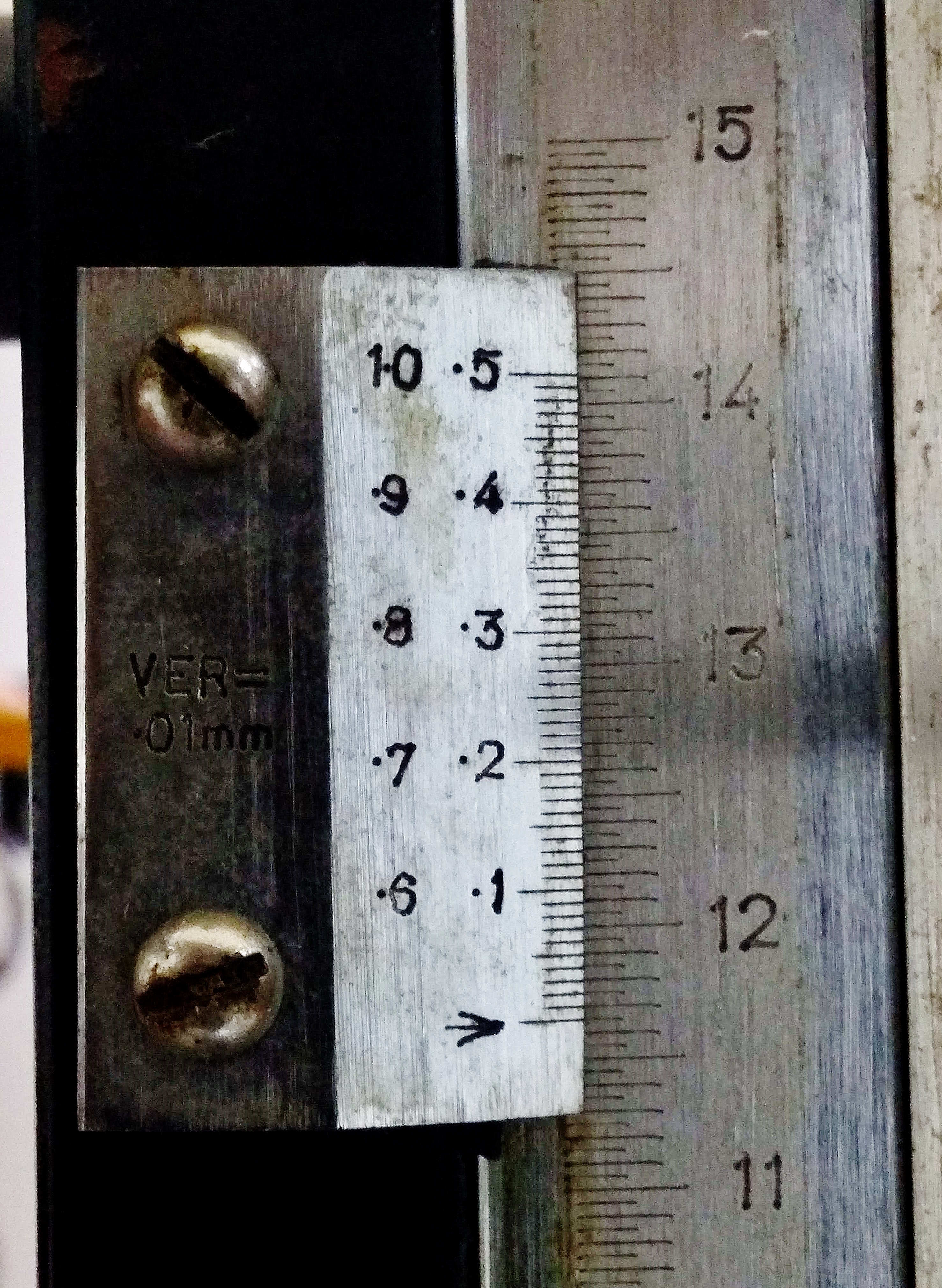
150 g mass on the hanger 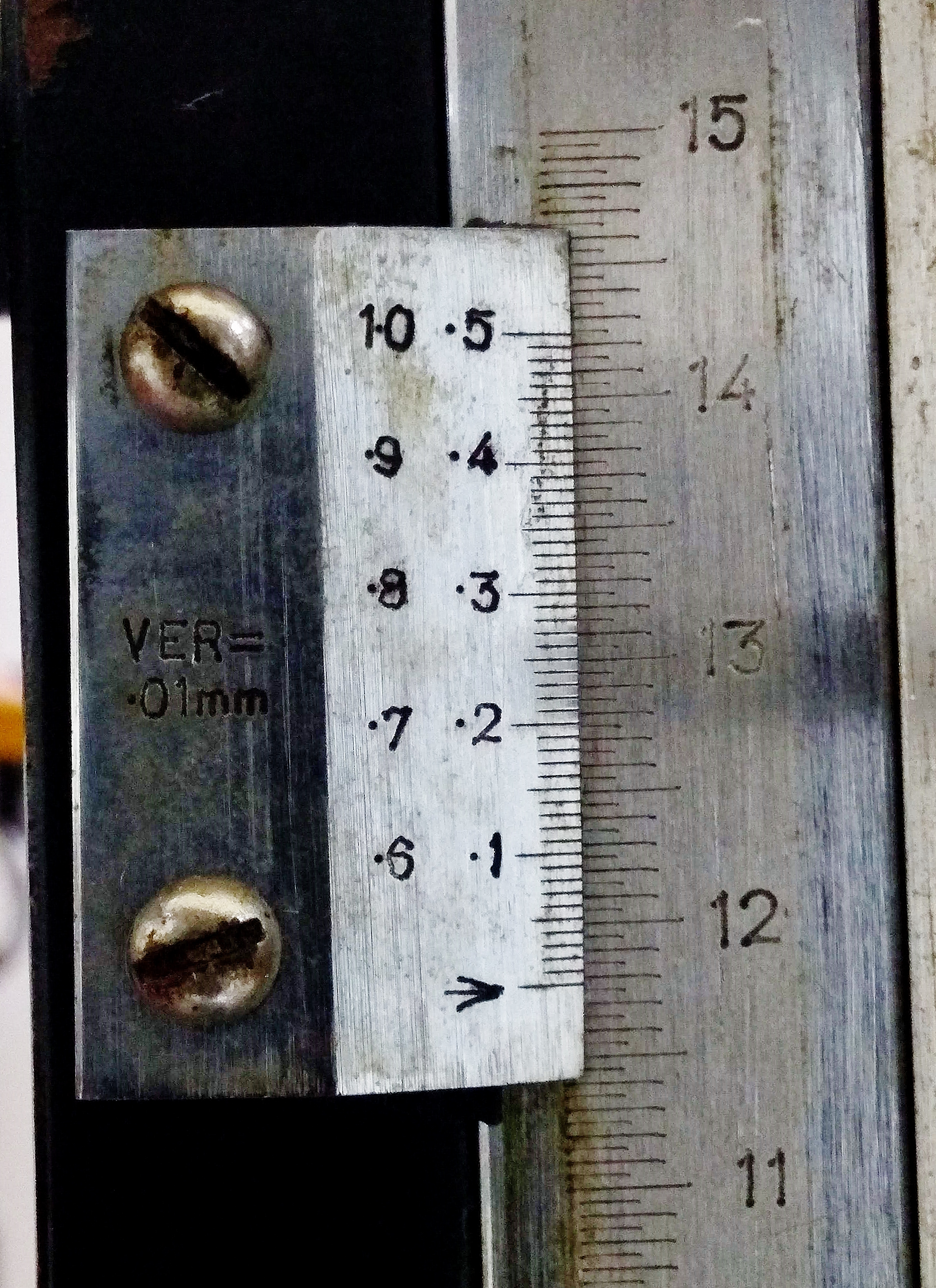
100 g mass on the hanger 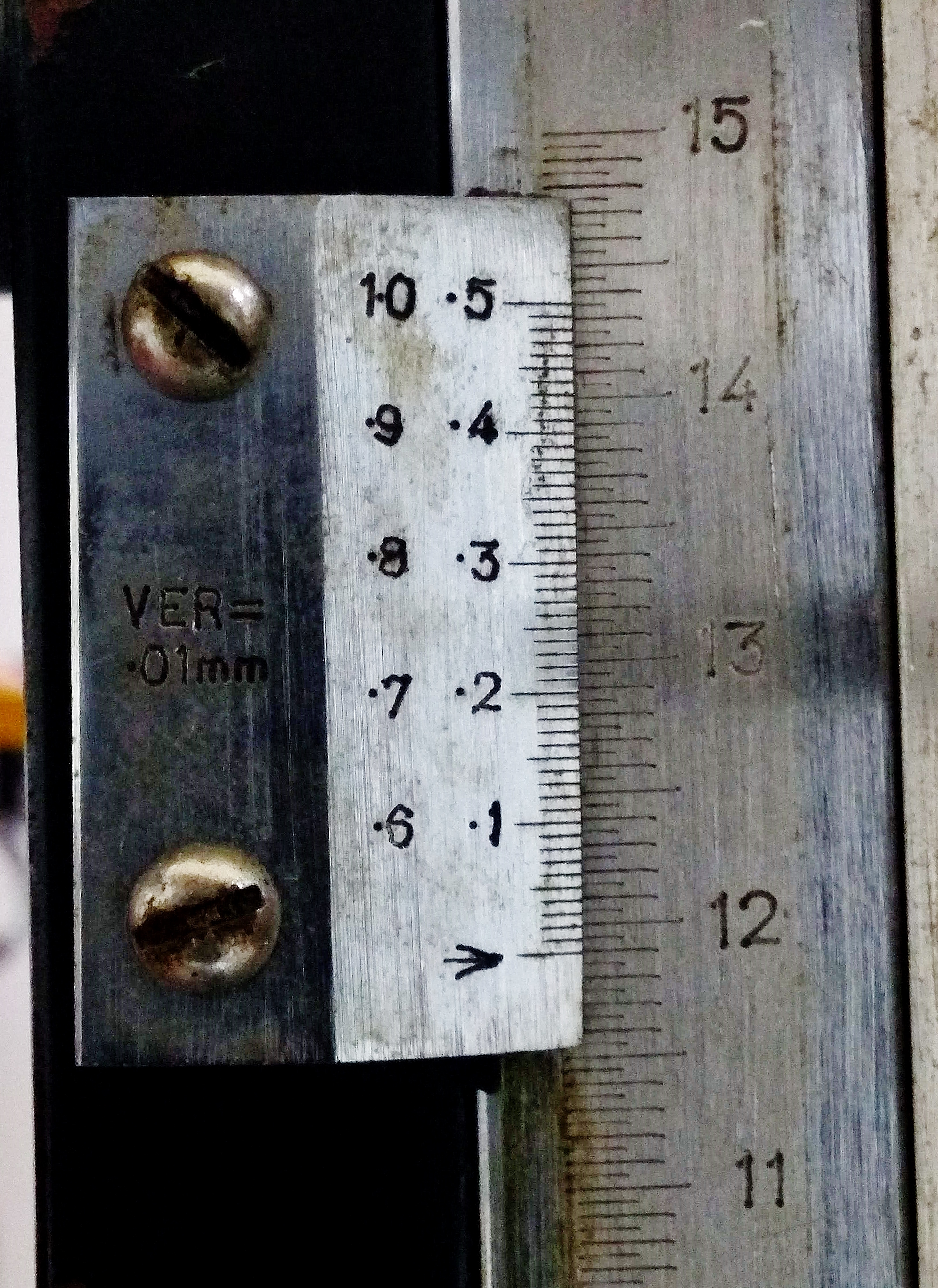
50 g mass on the hanger 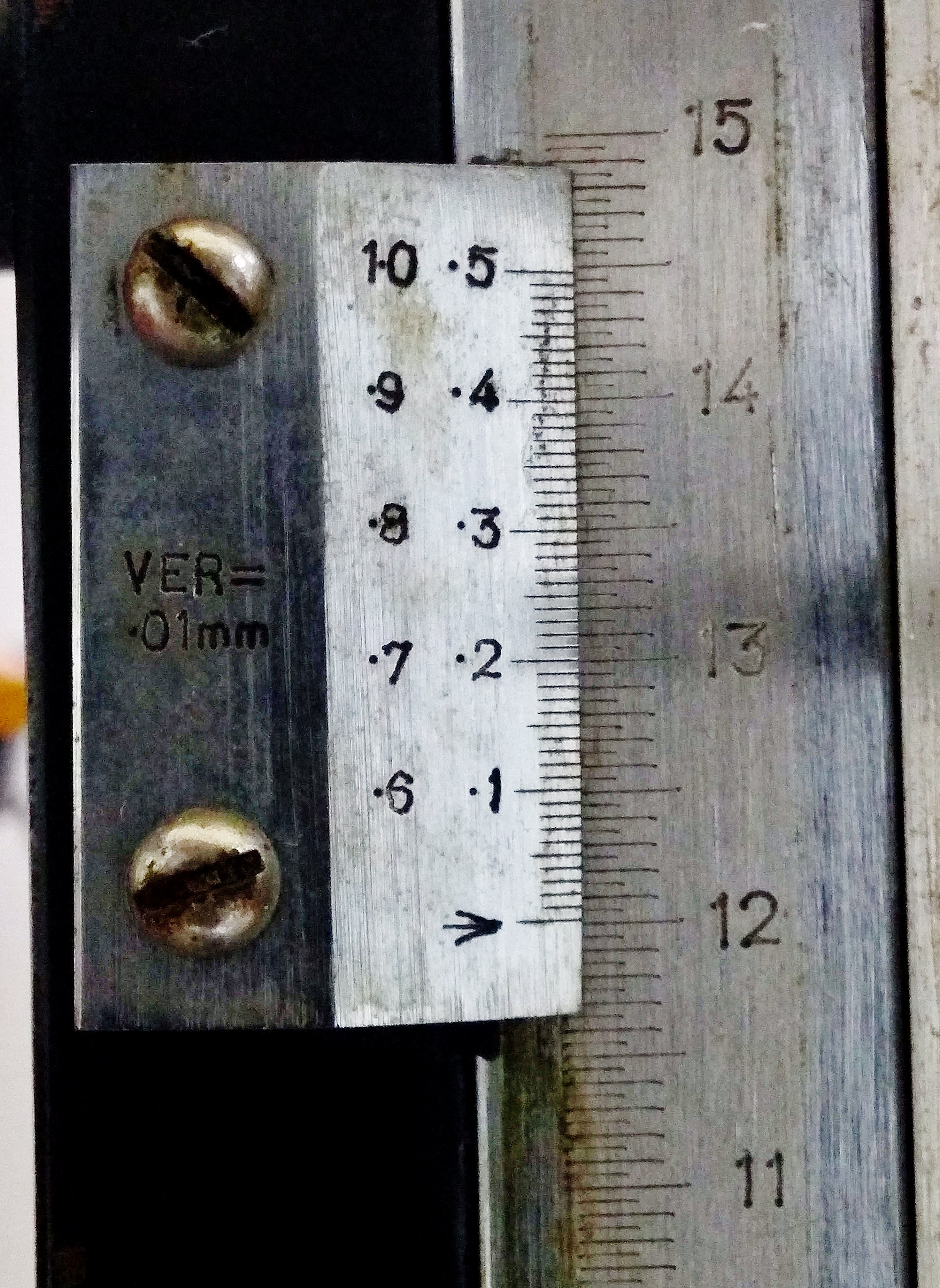
No mass on the hanger
- Measure the breadth and depth of the meter scale. Take care of zero errors if they are present in the micrometer screw and vernier caliper. (click on the images to enlarge)
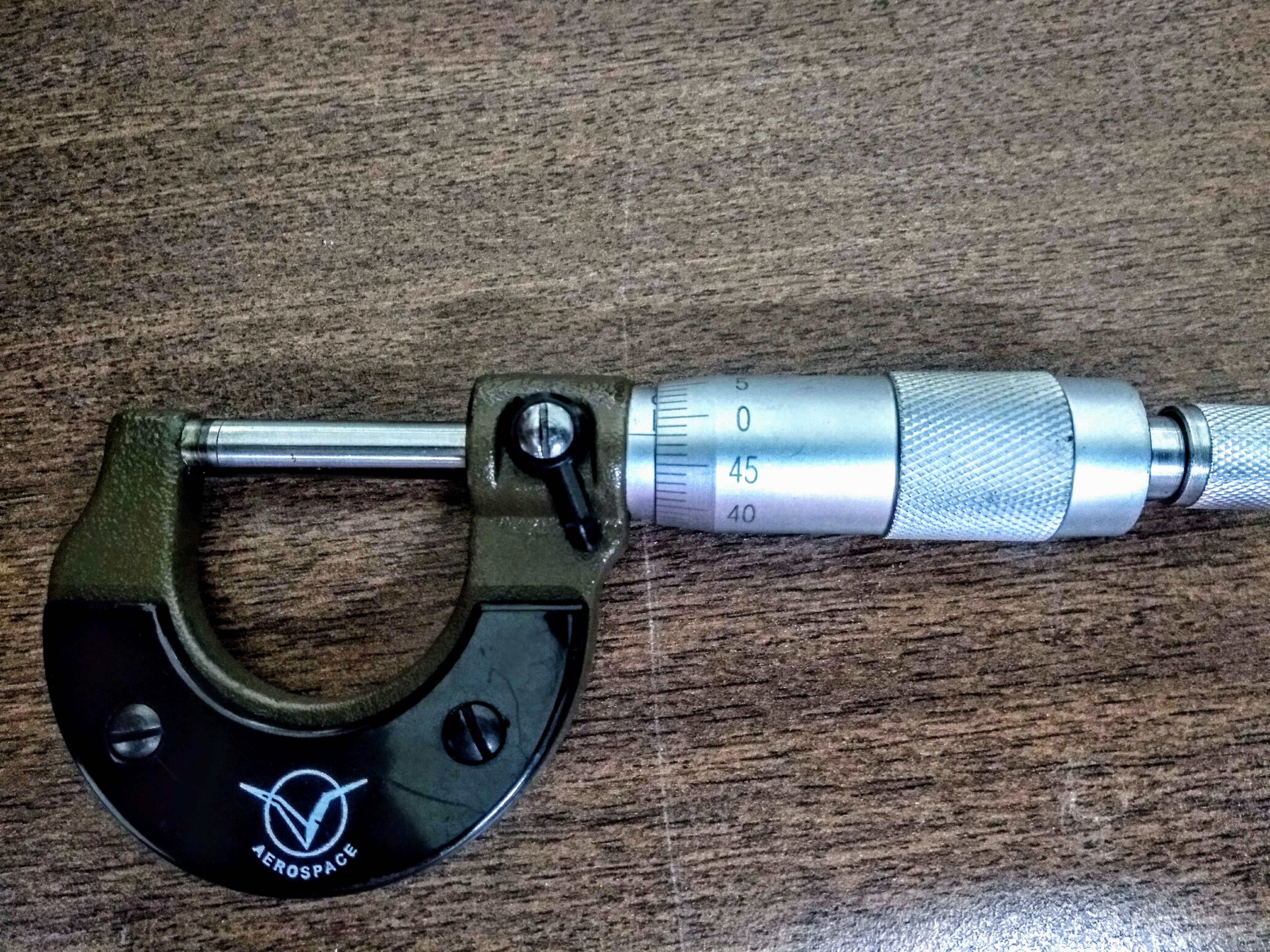
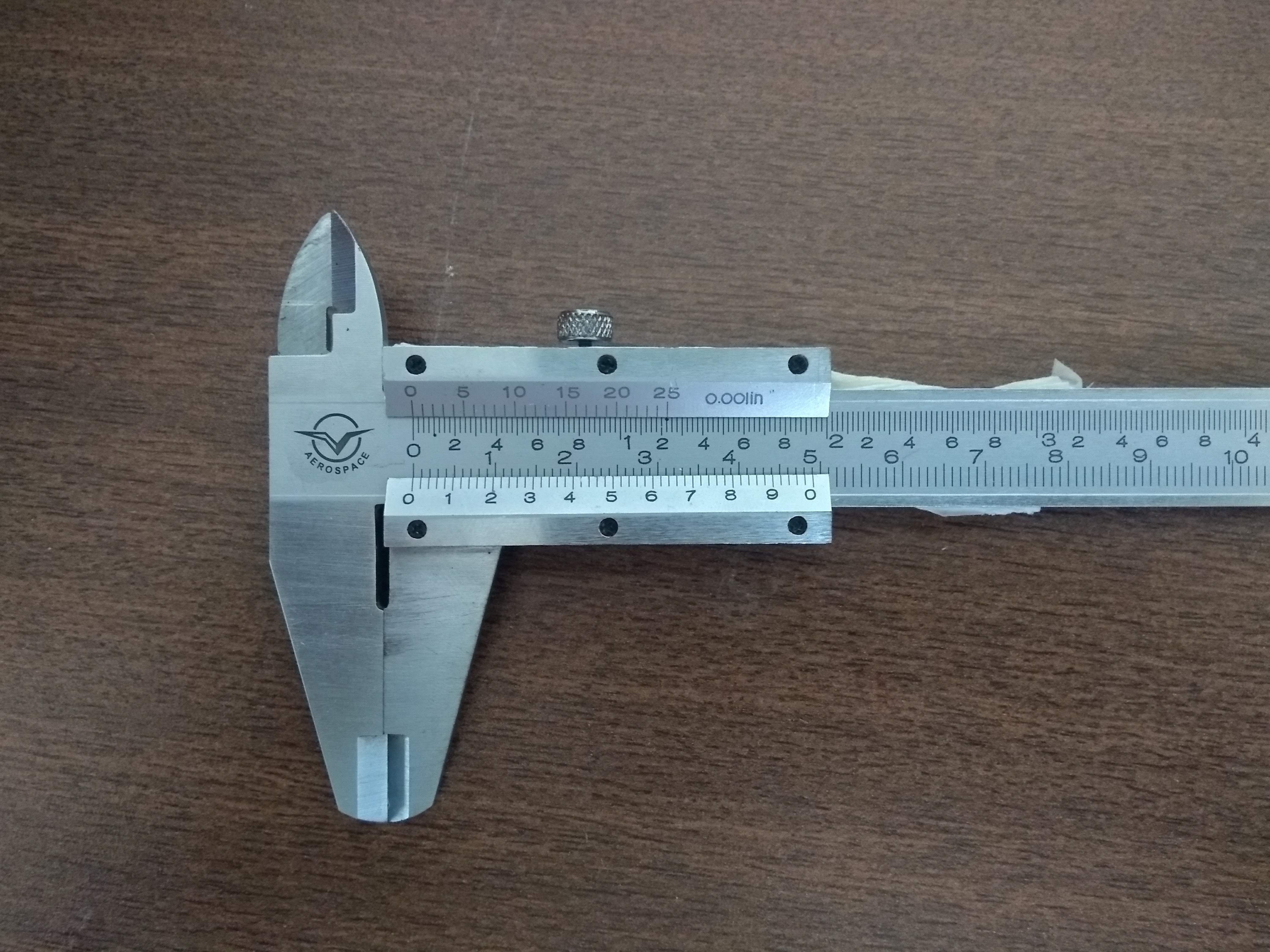
- Plot the graph of M vs e and find the value of young’s modulus from slope of the graph.
Observations:
